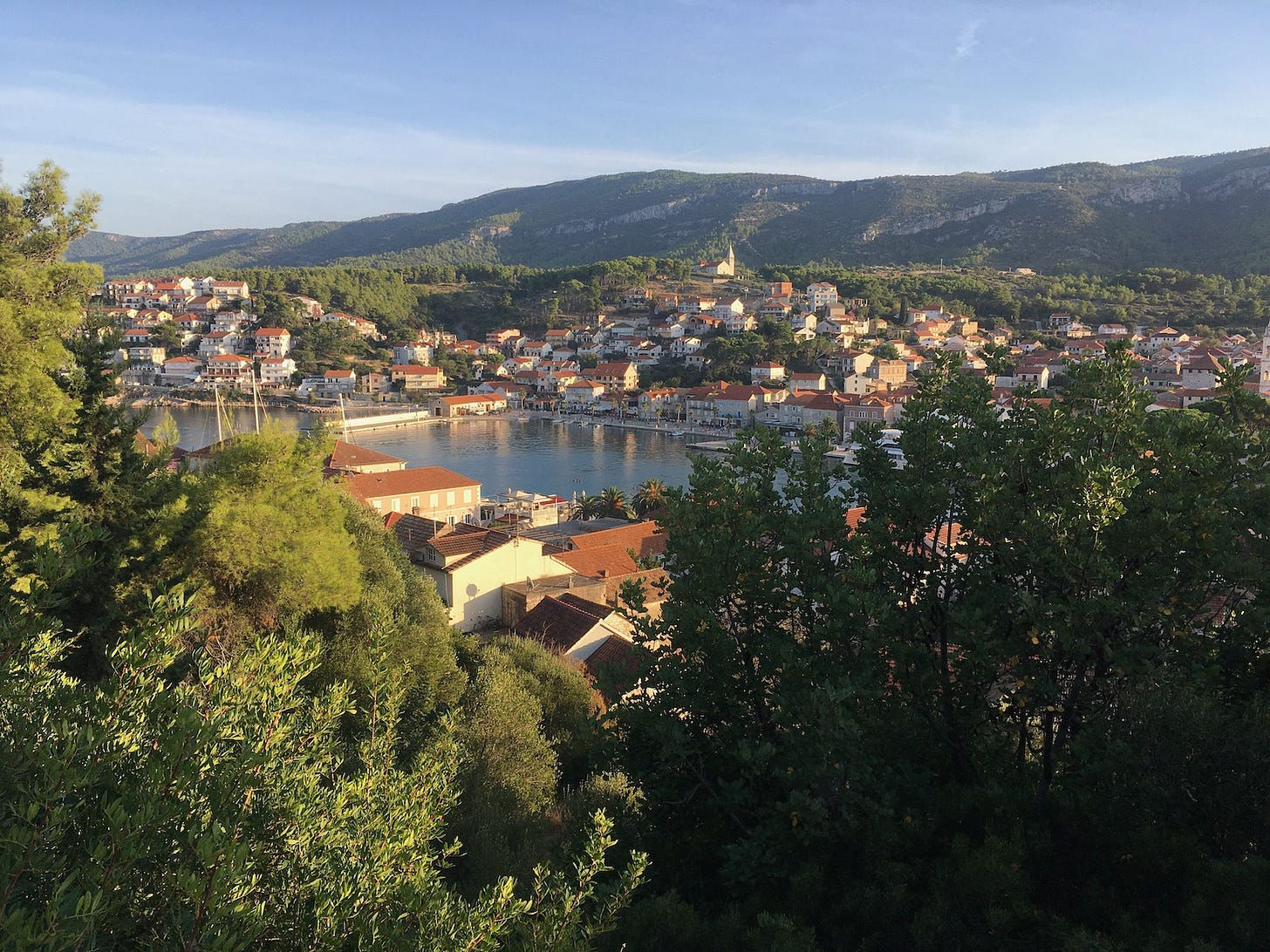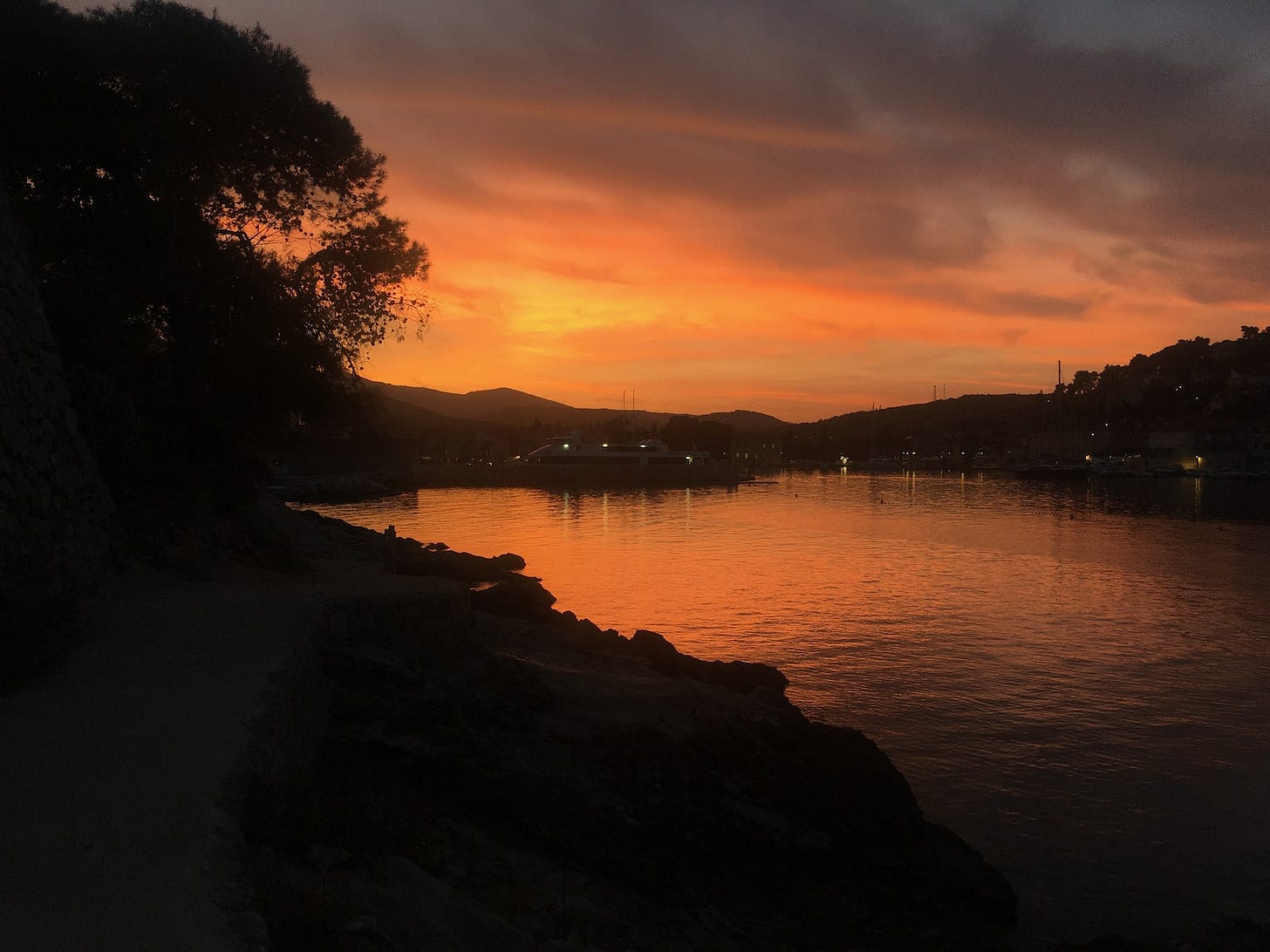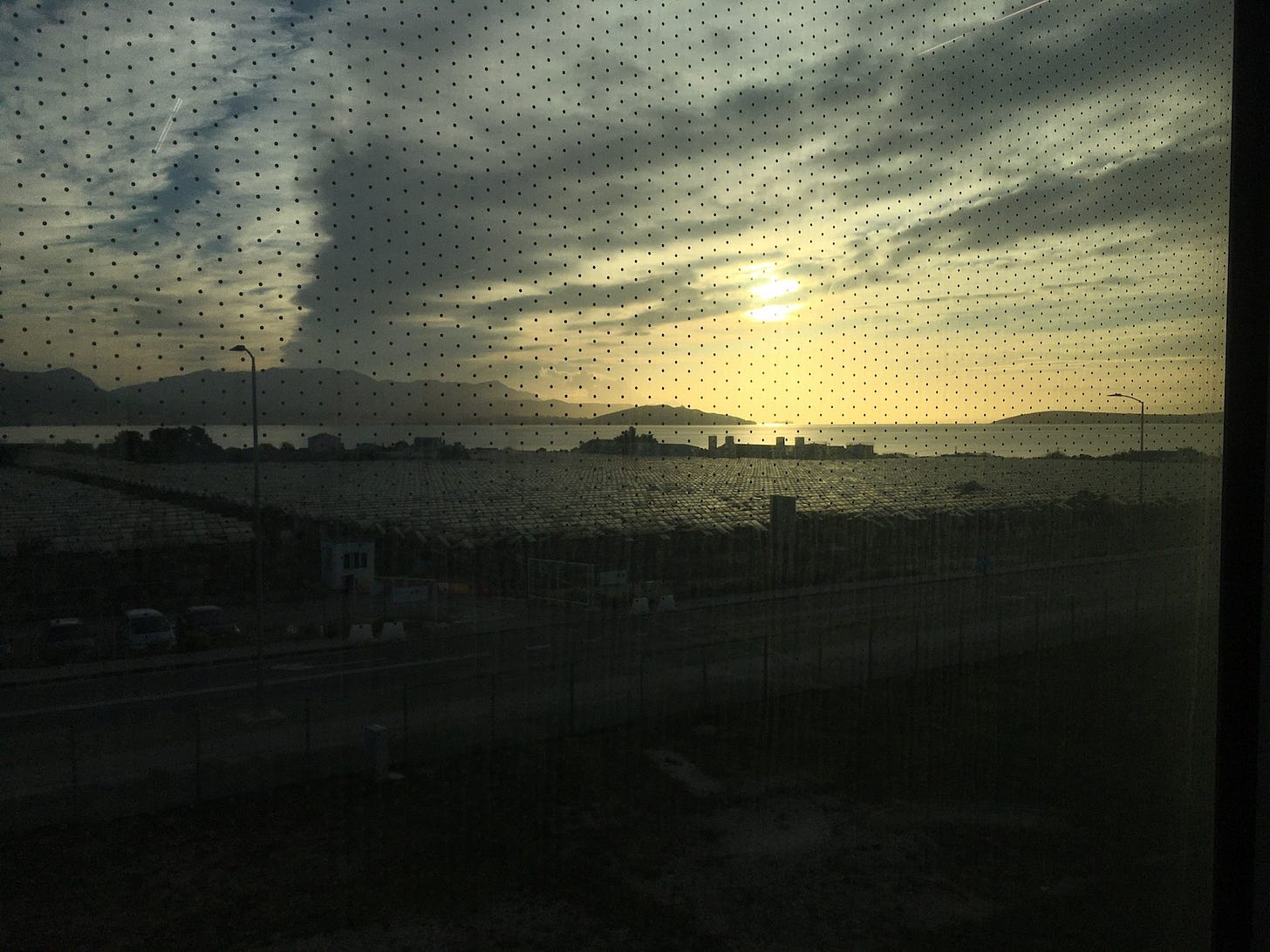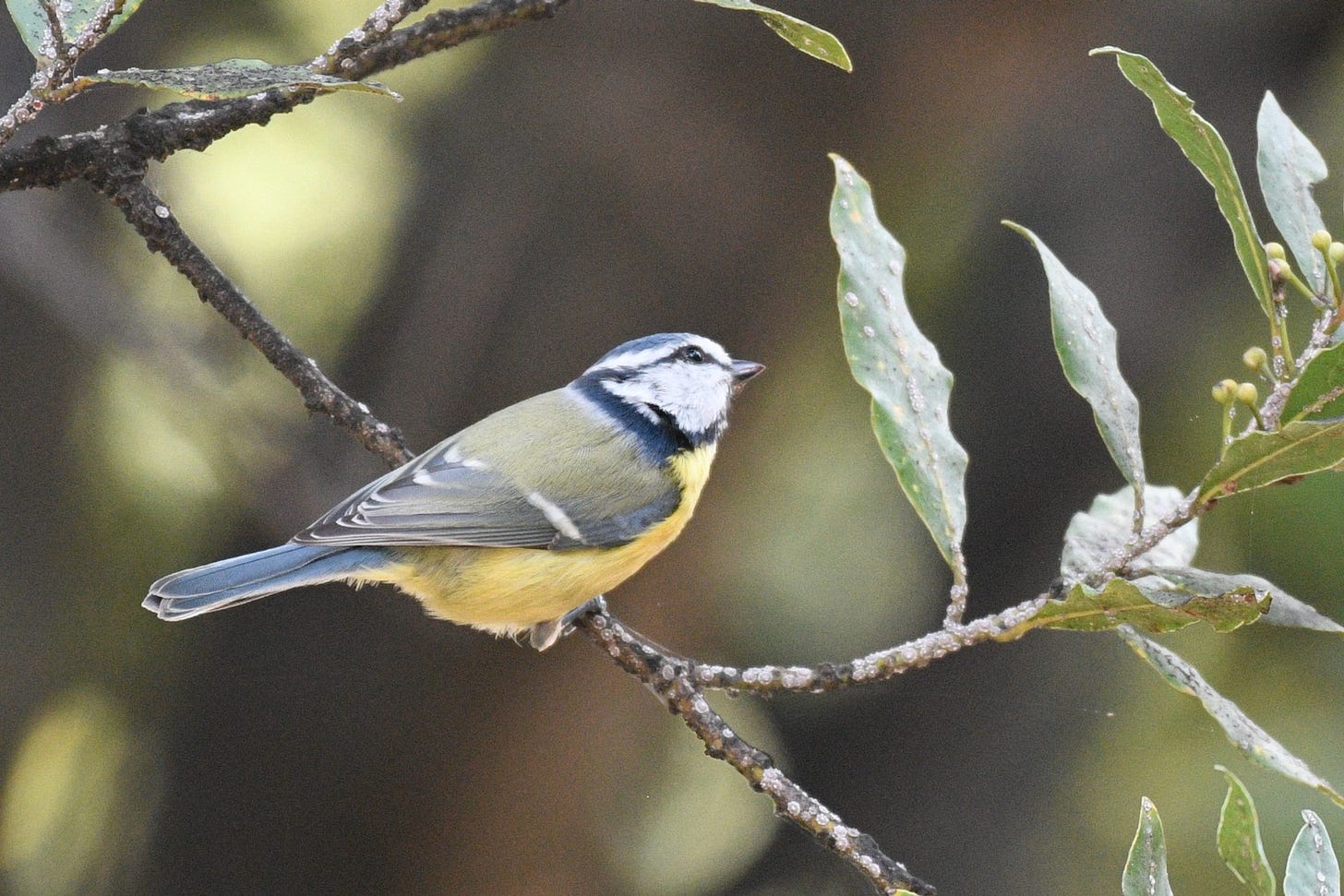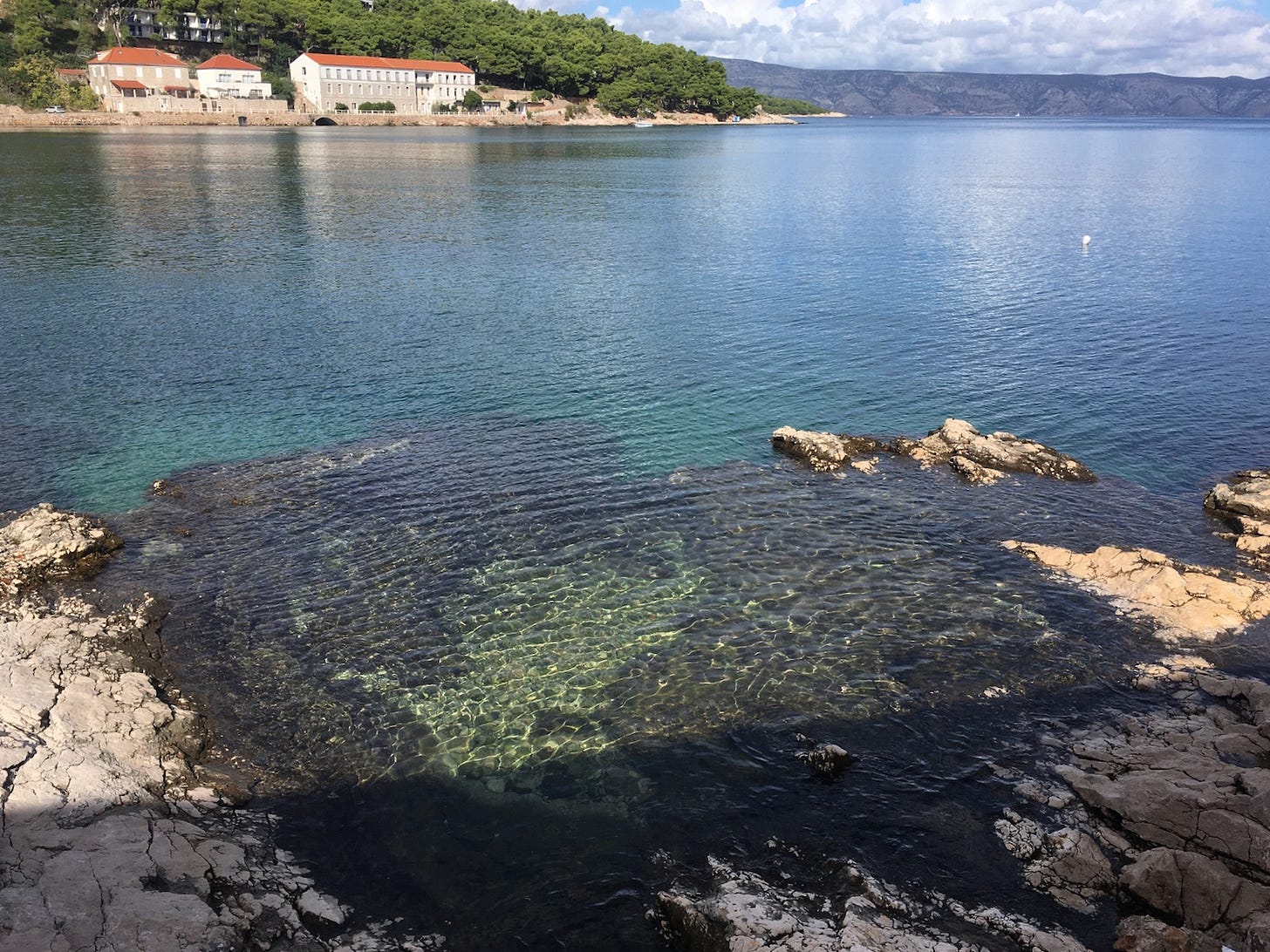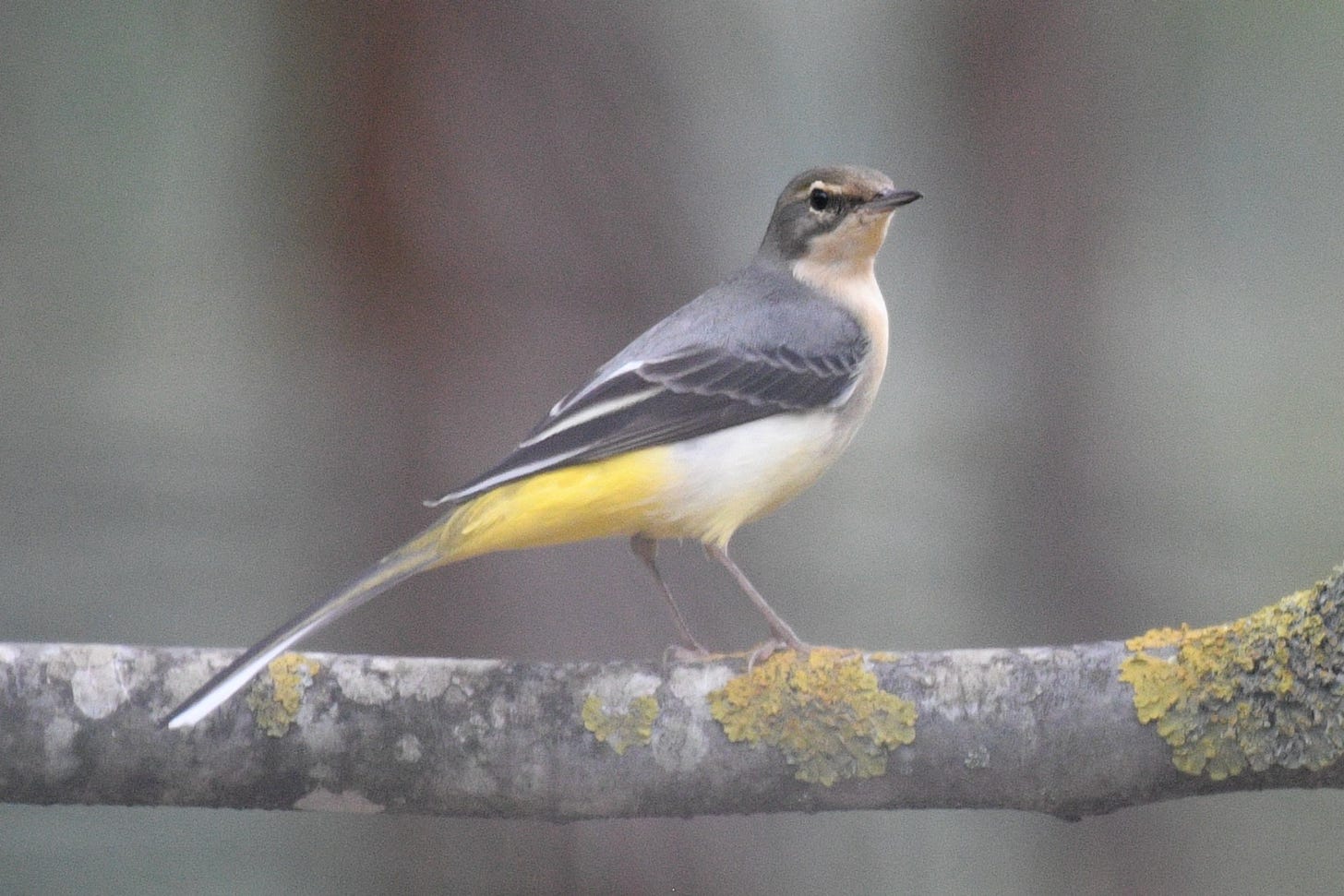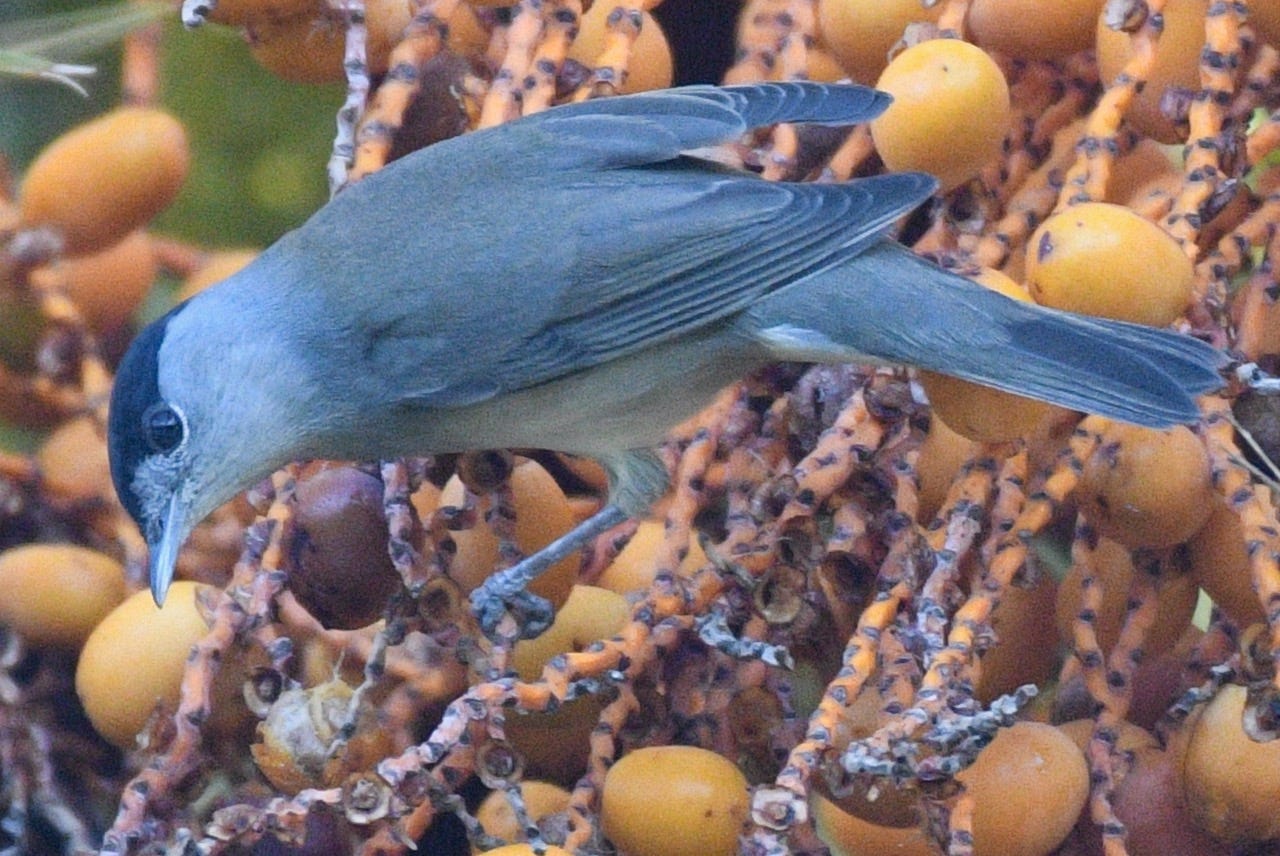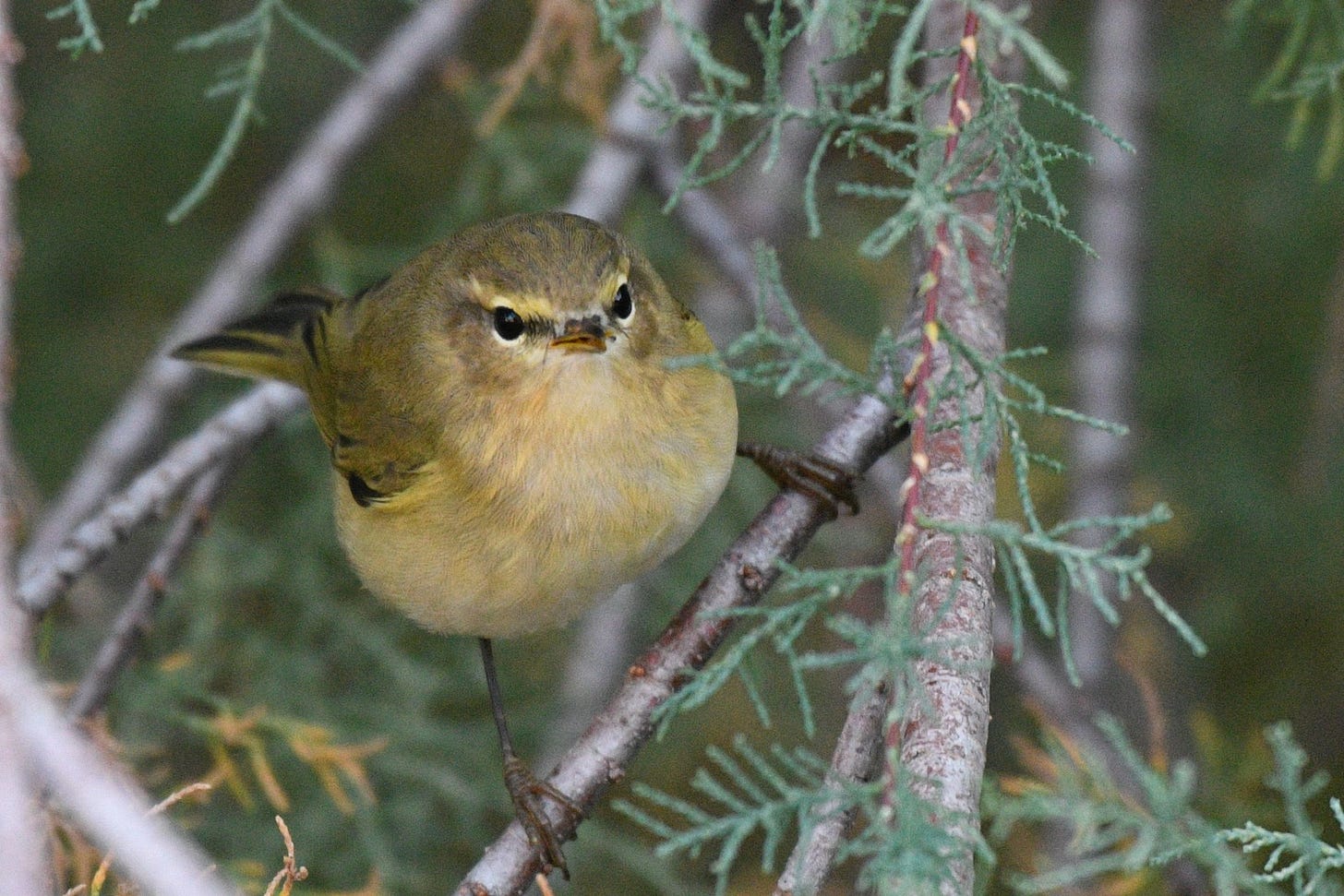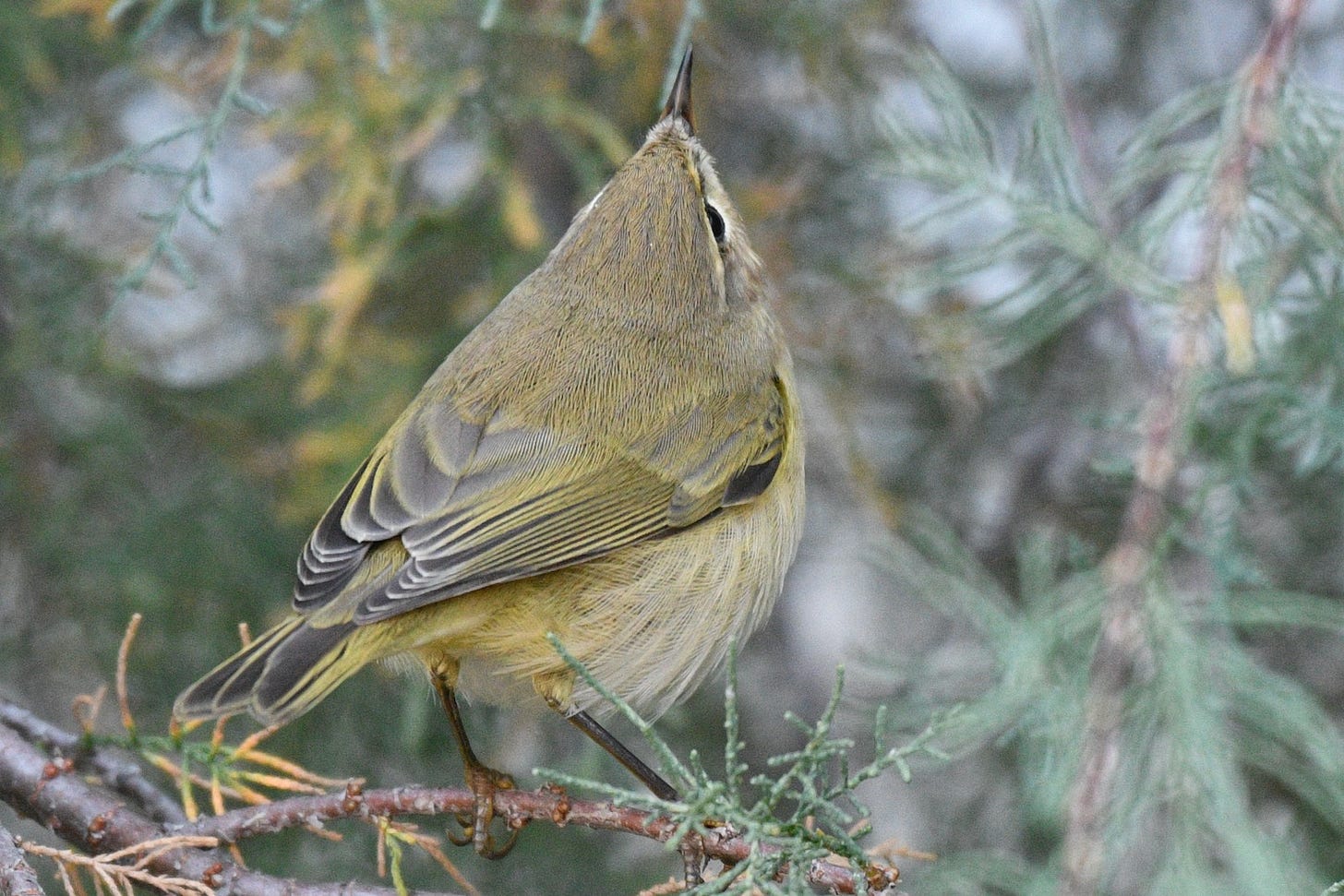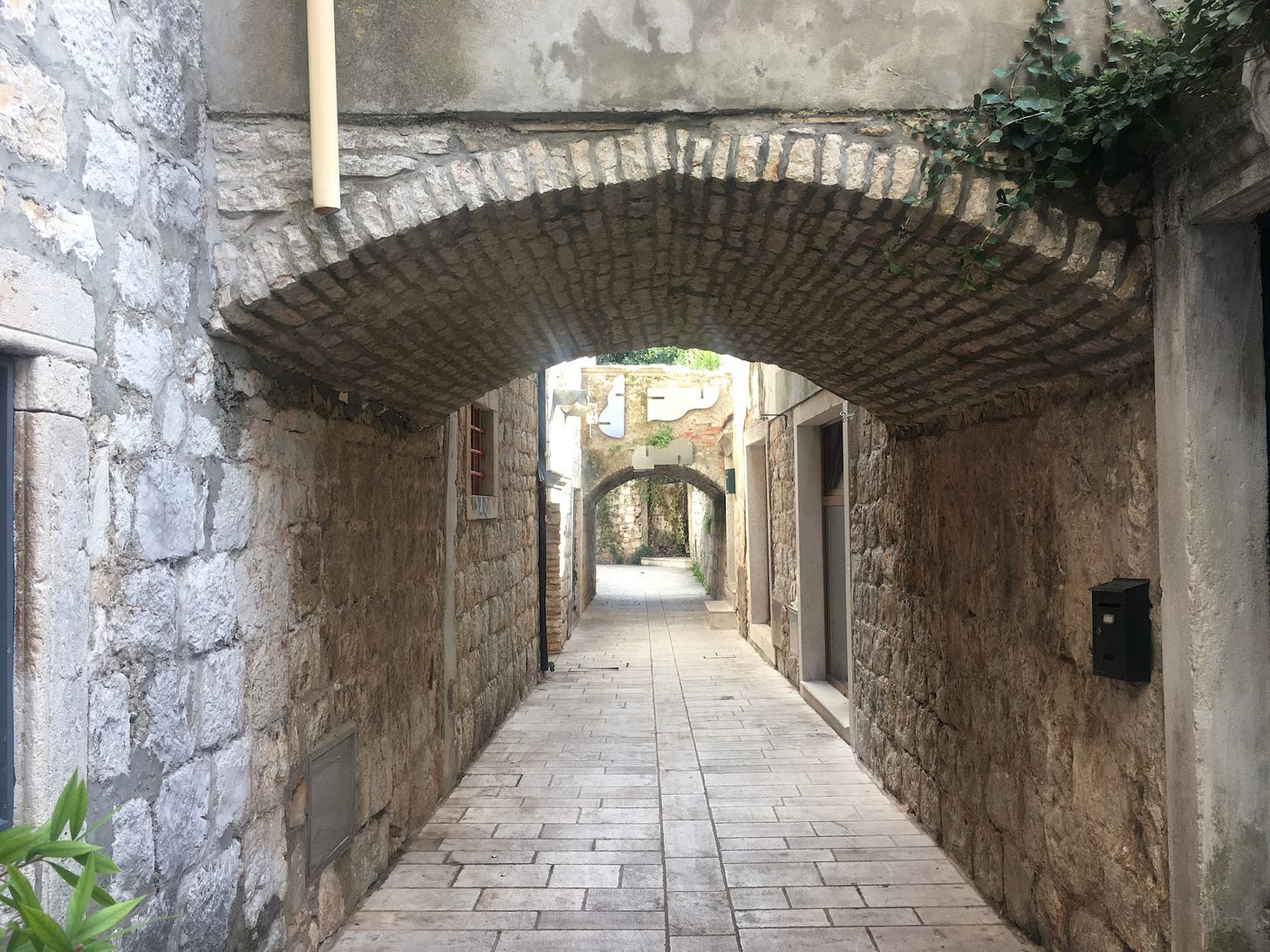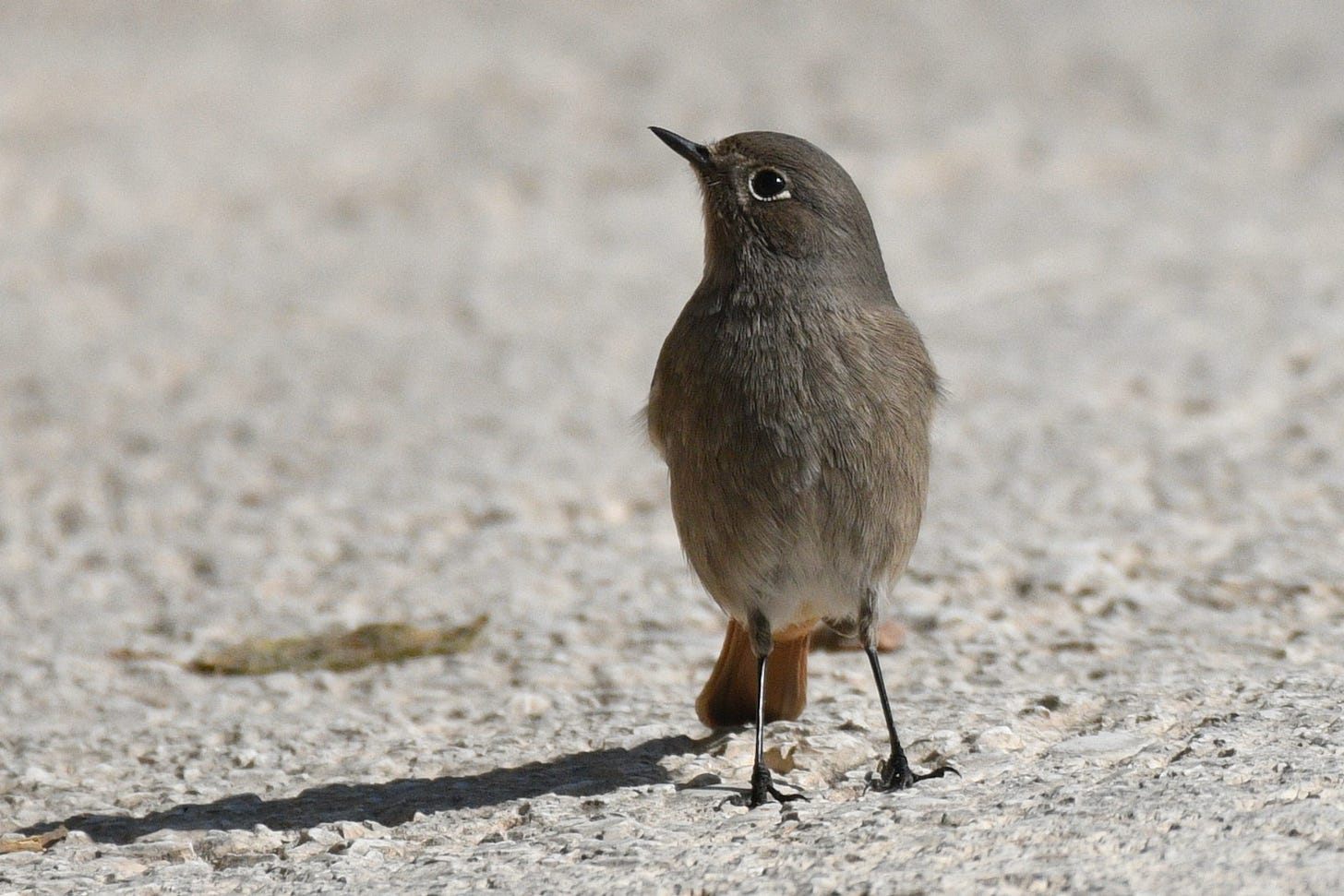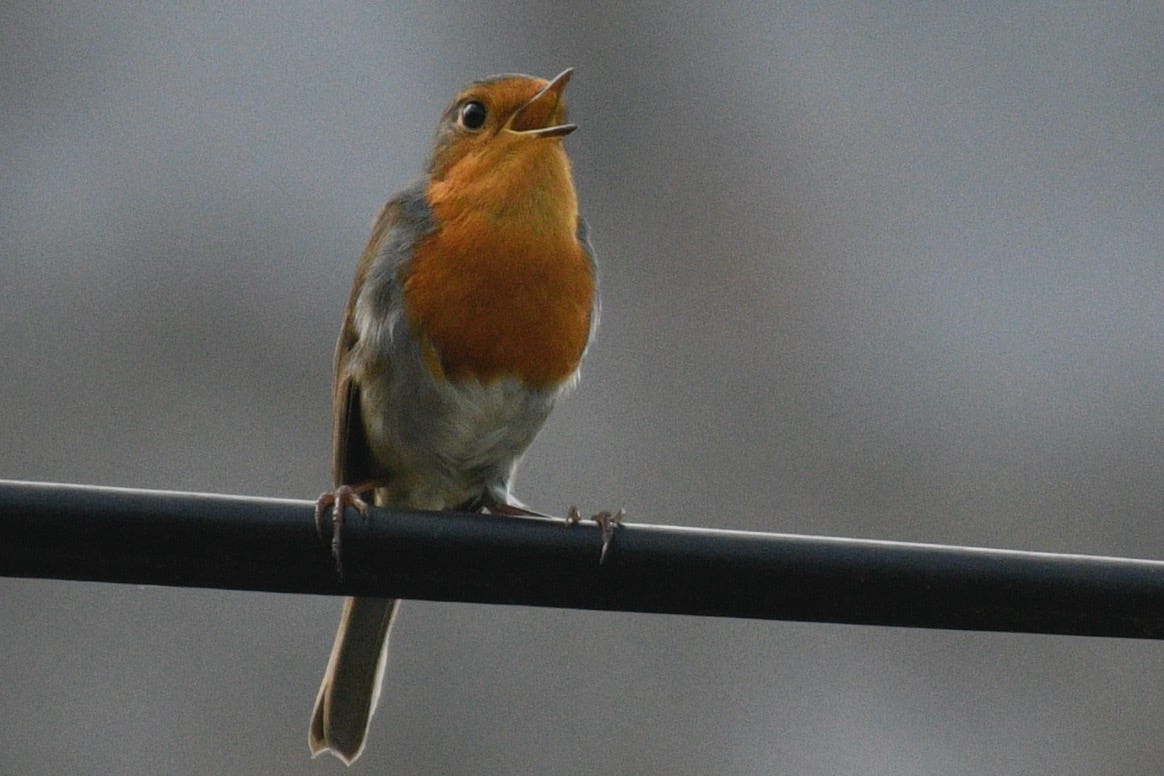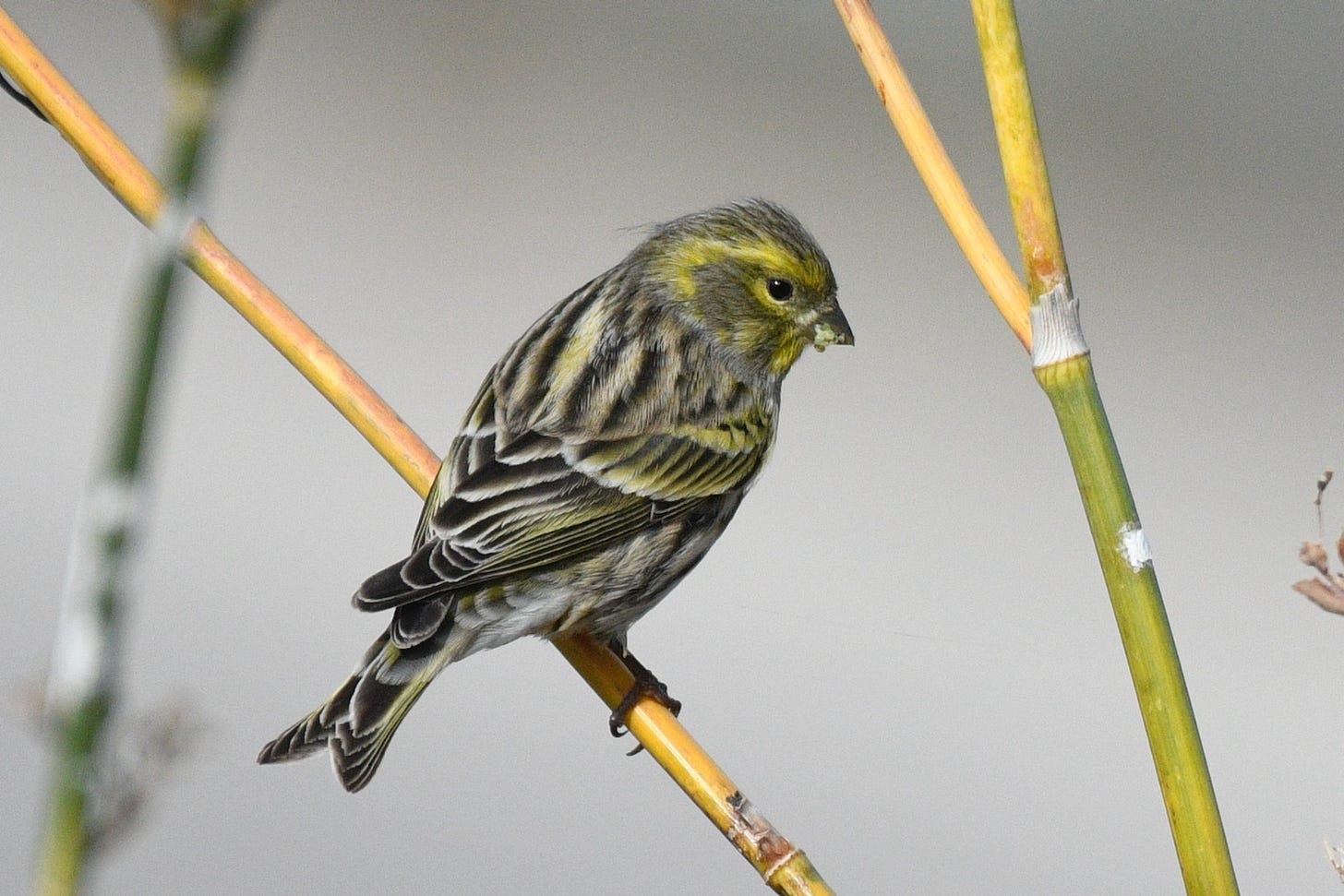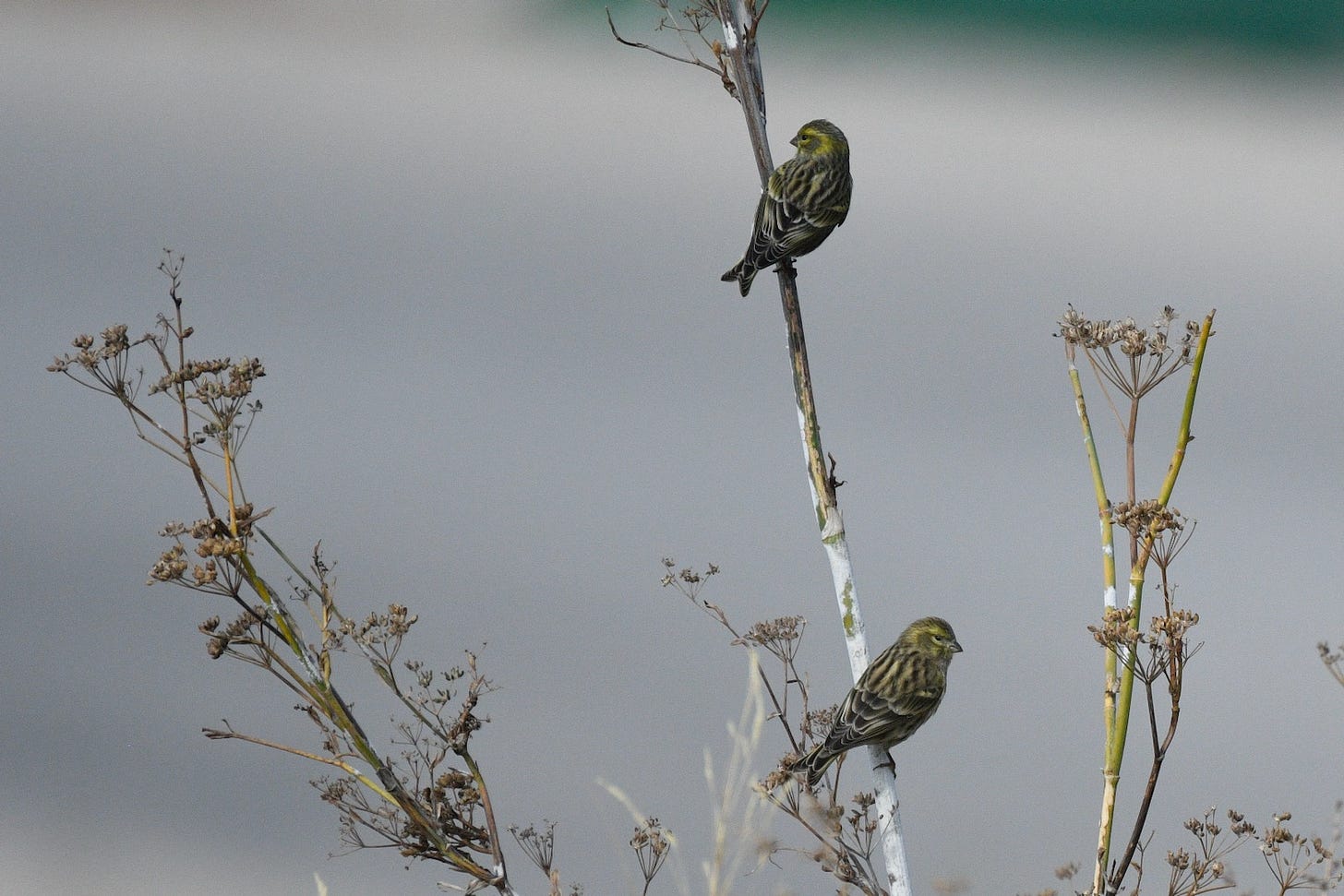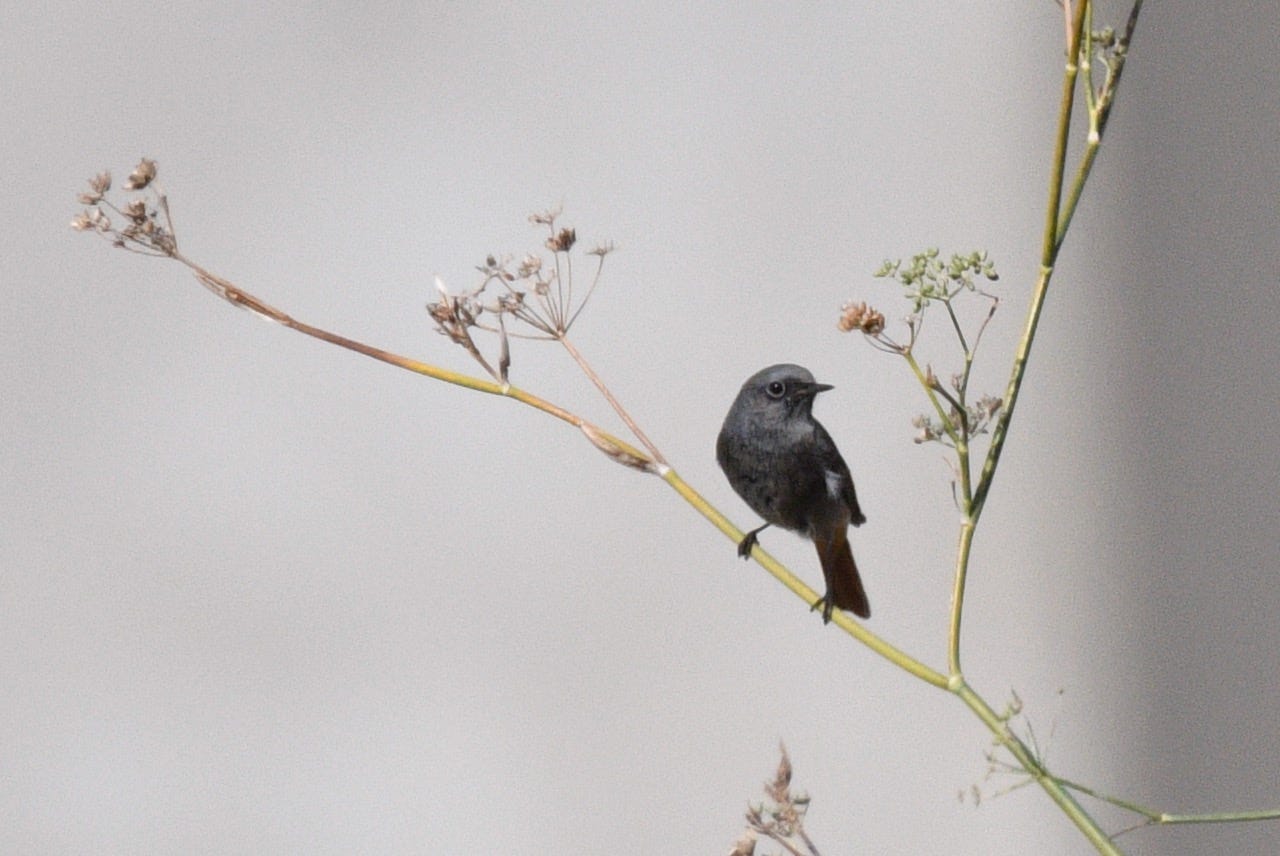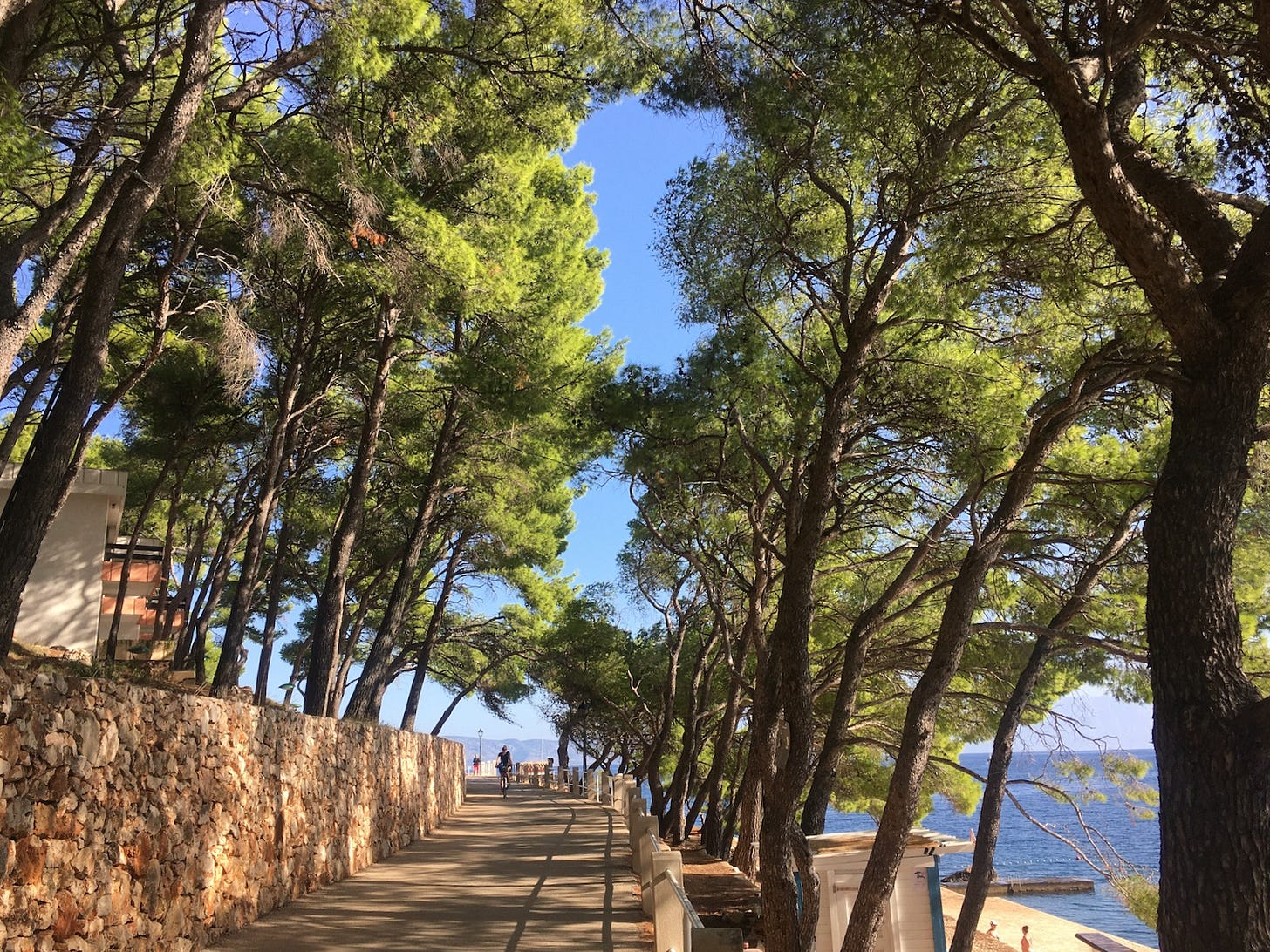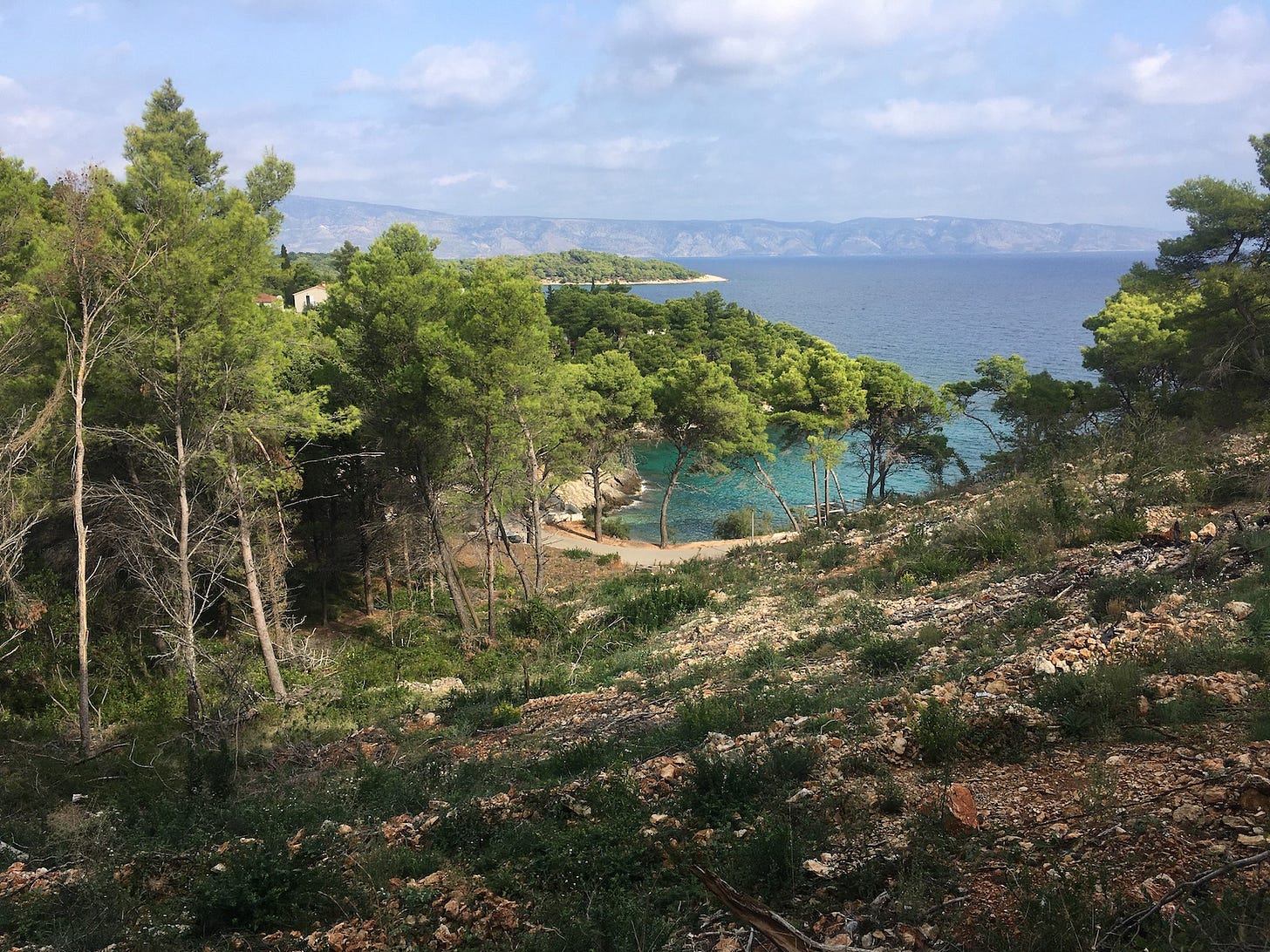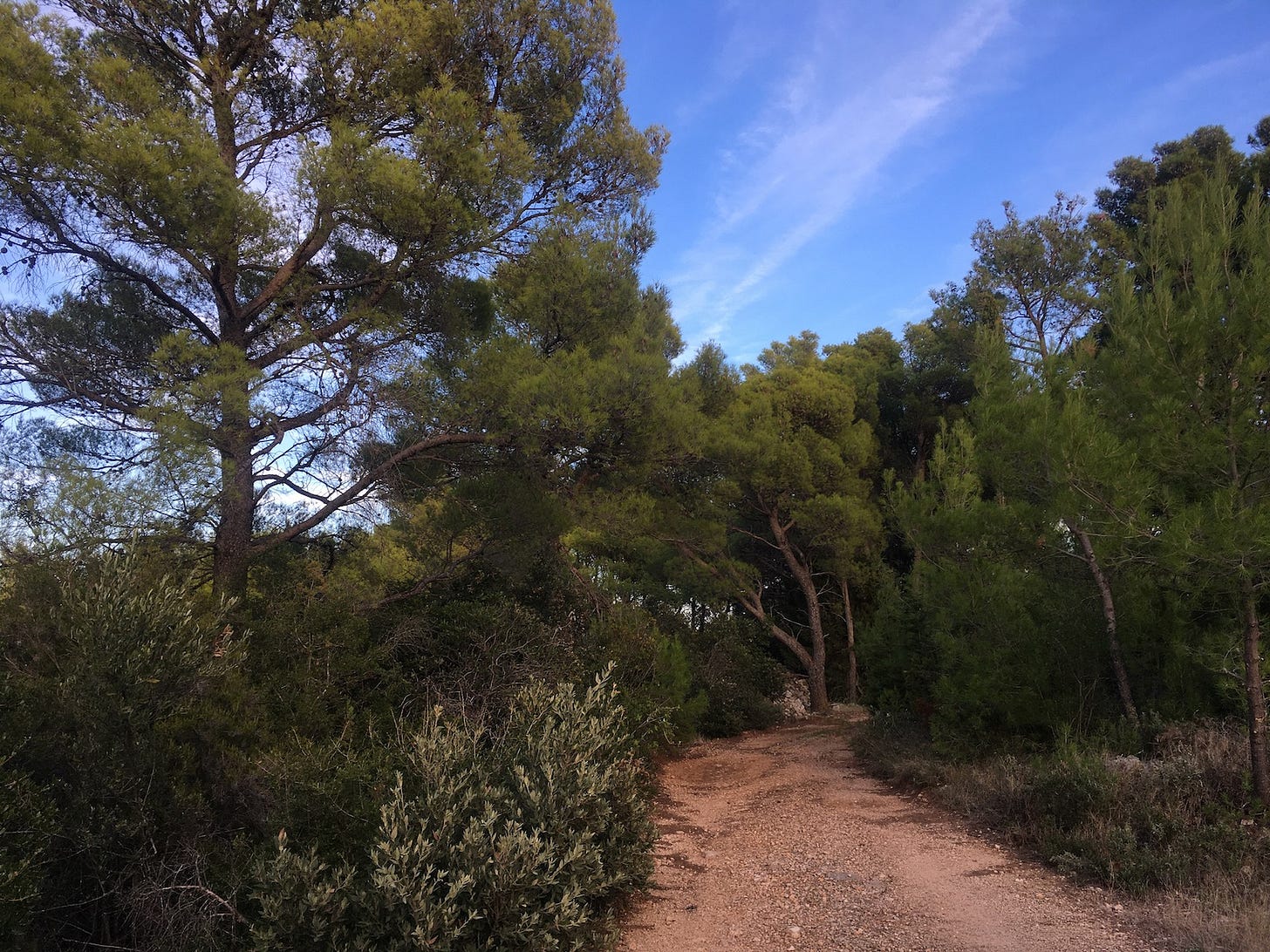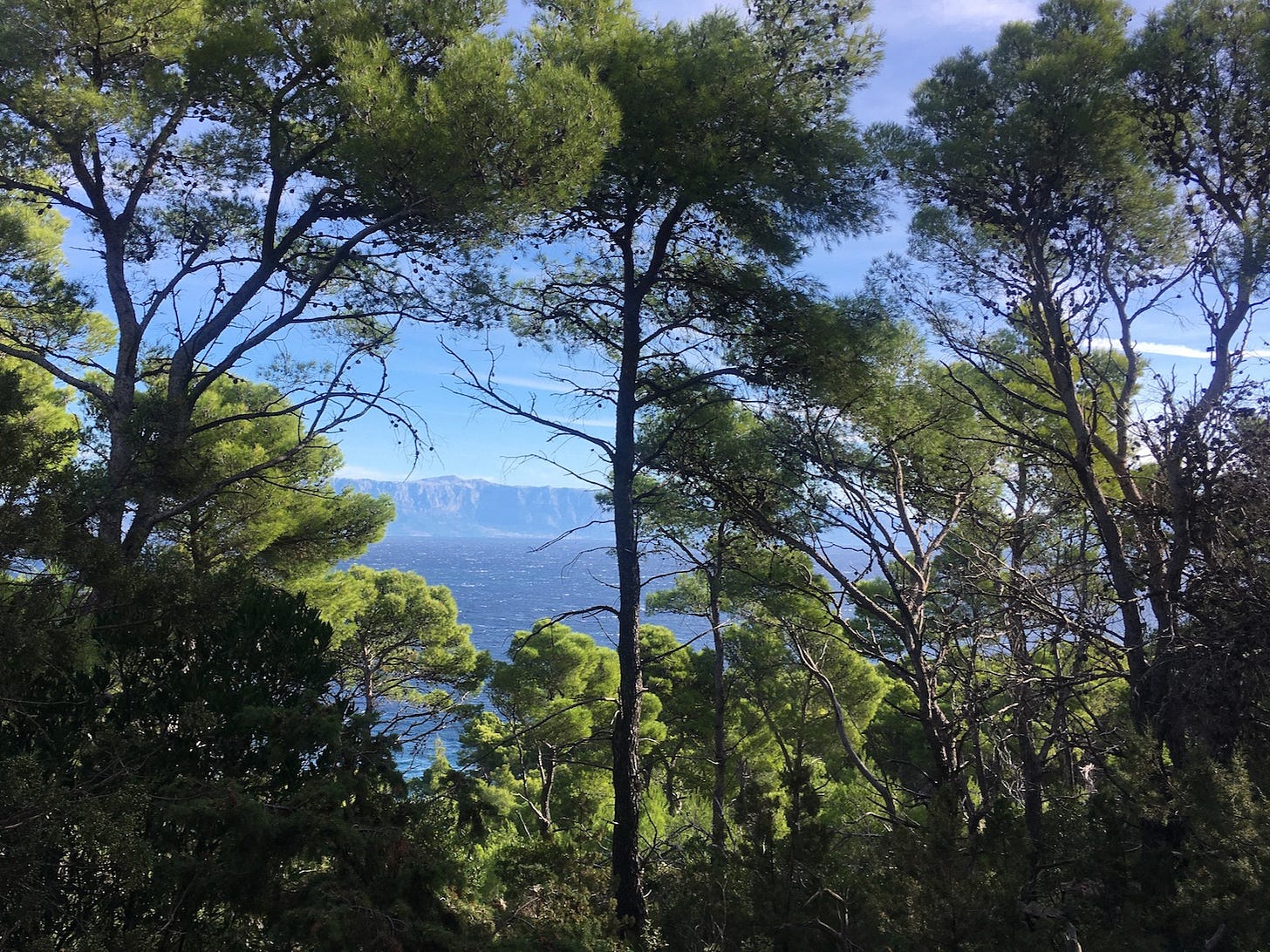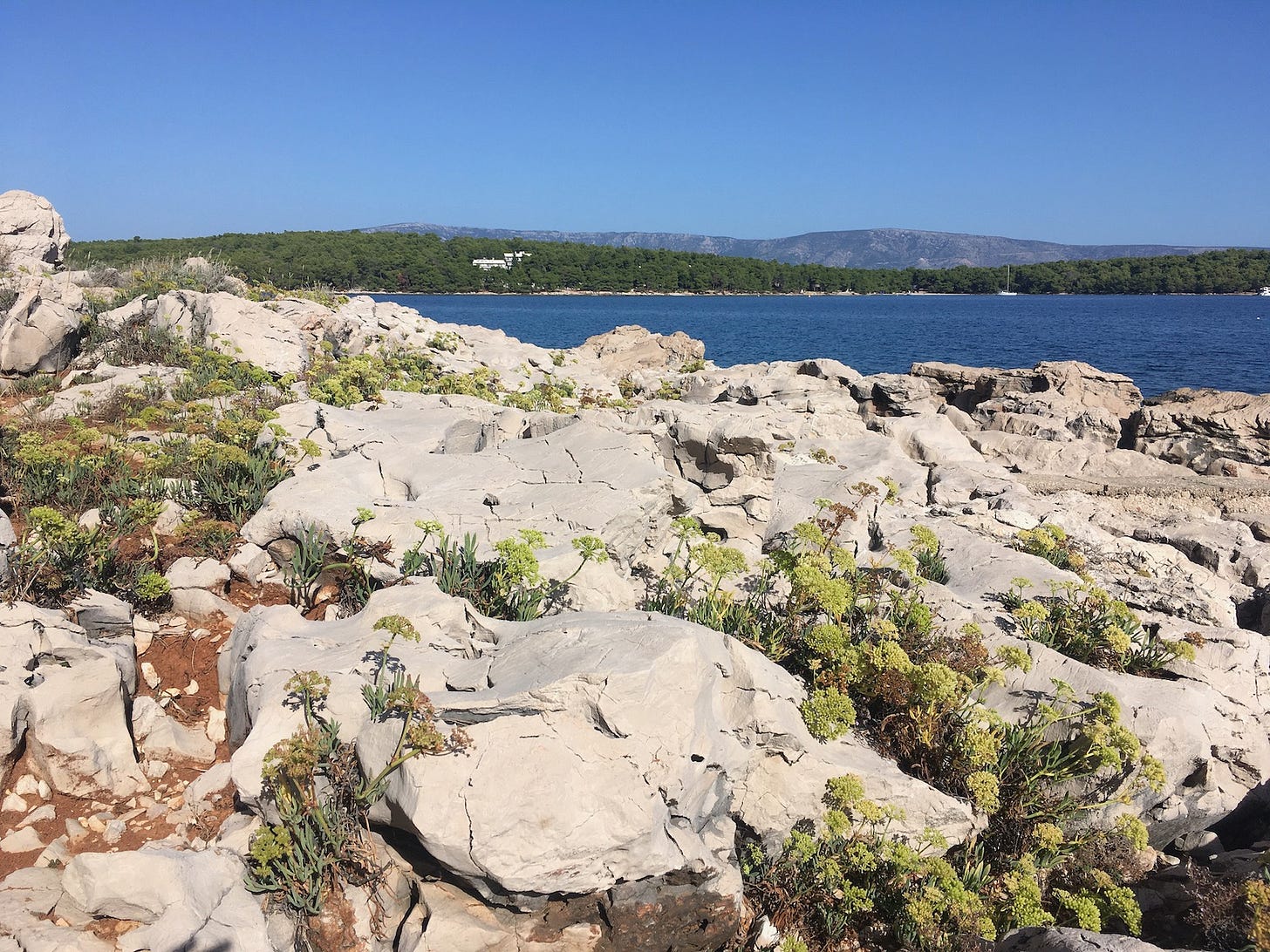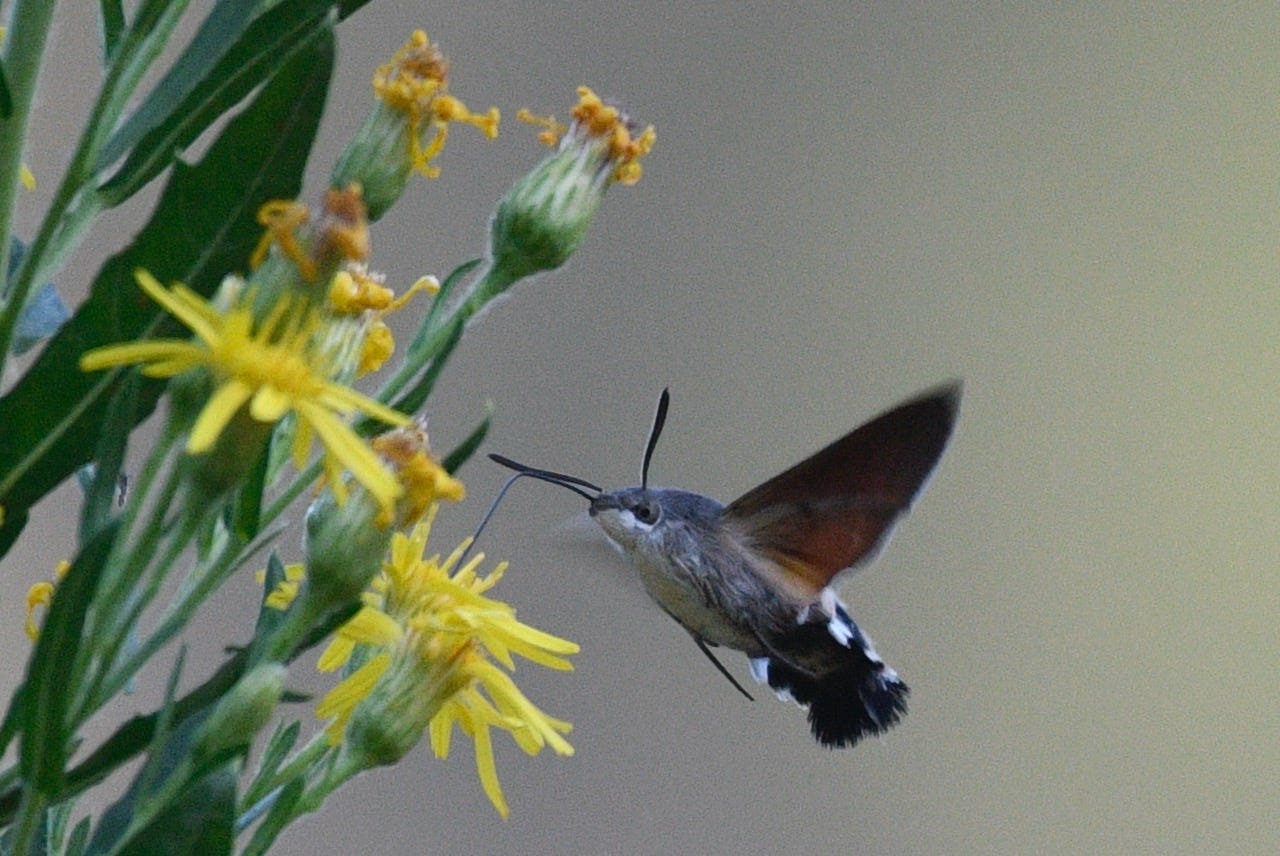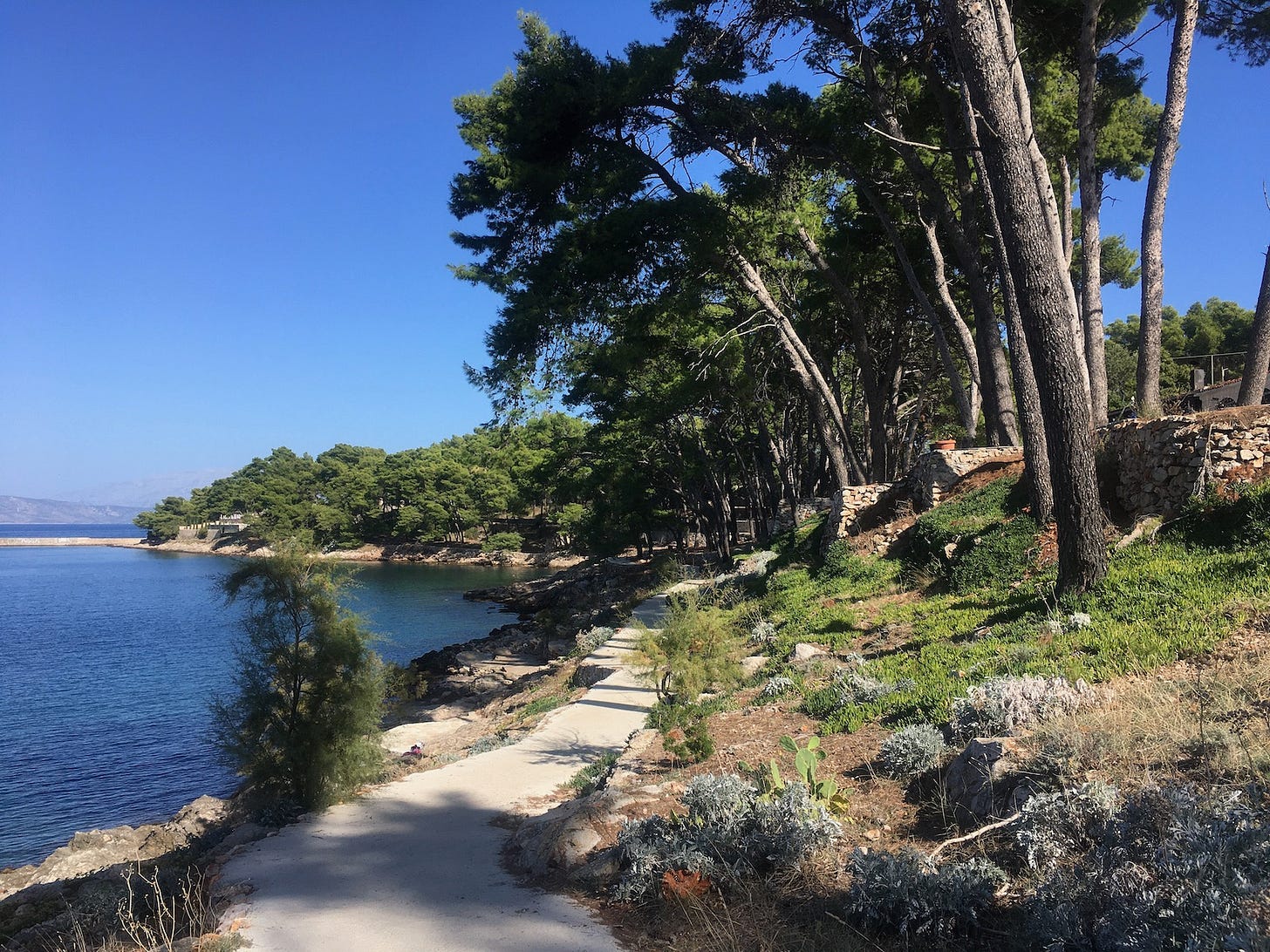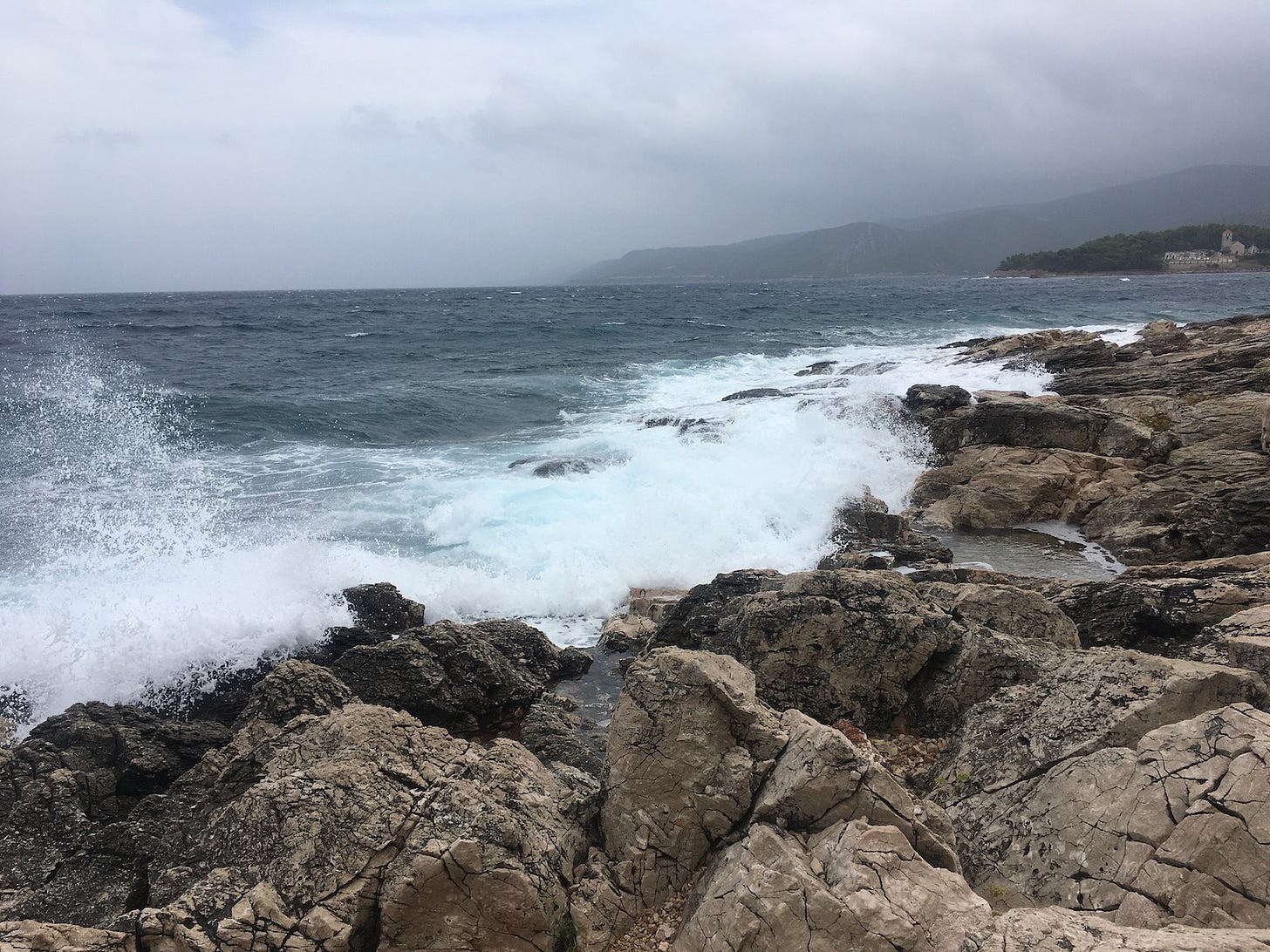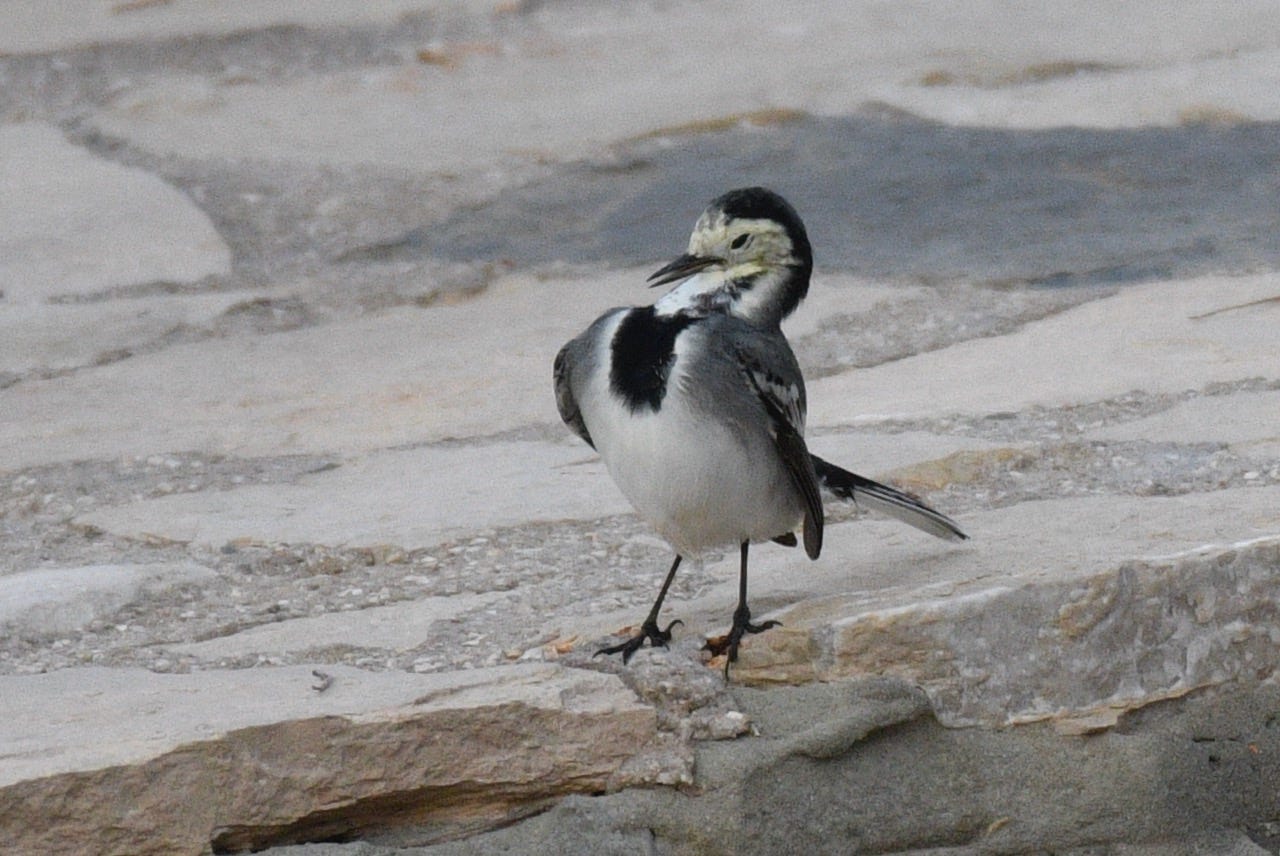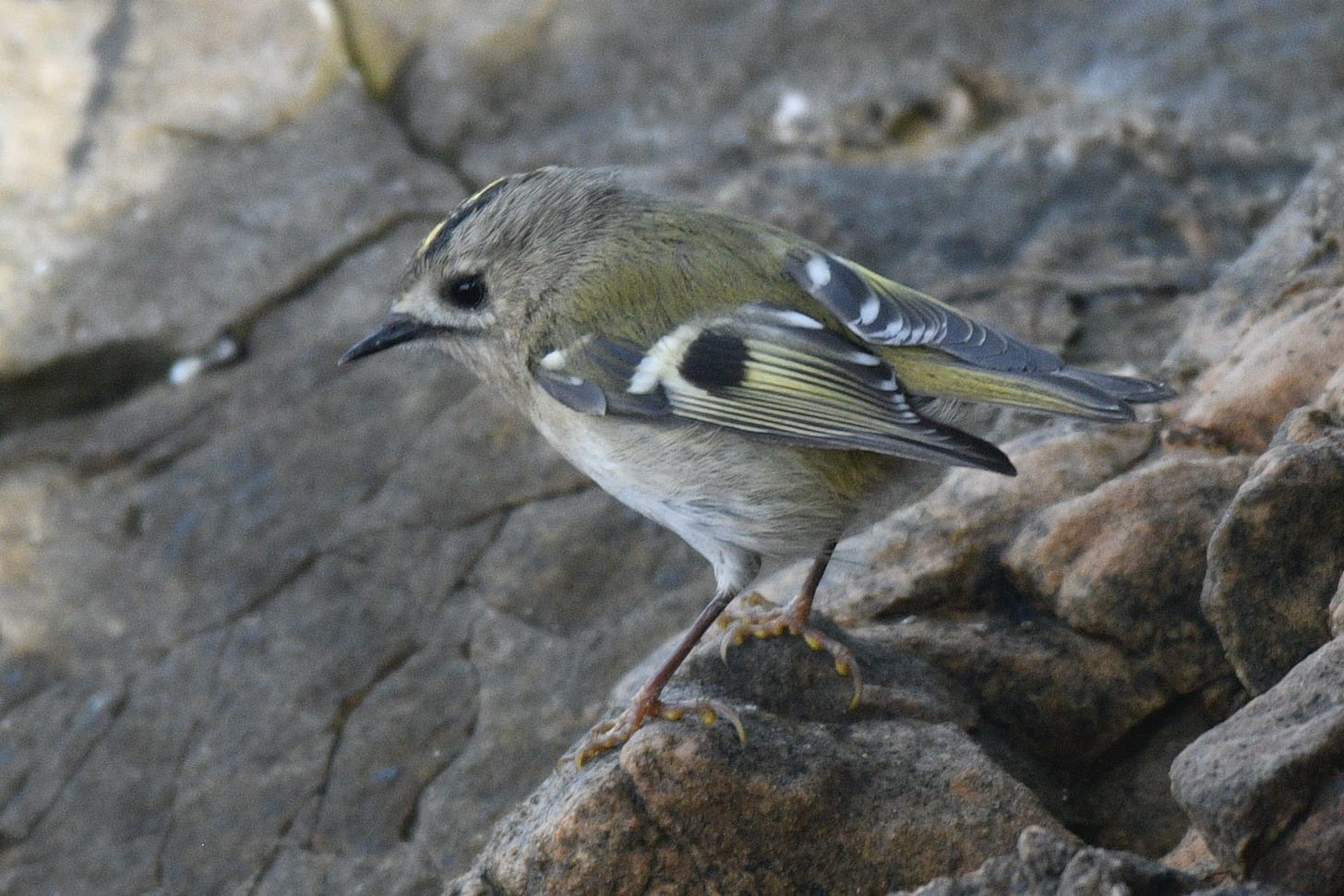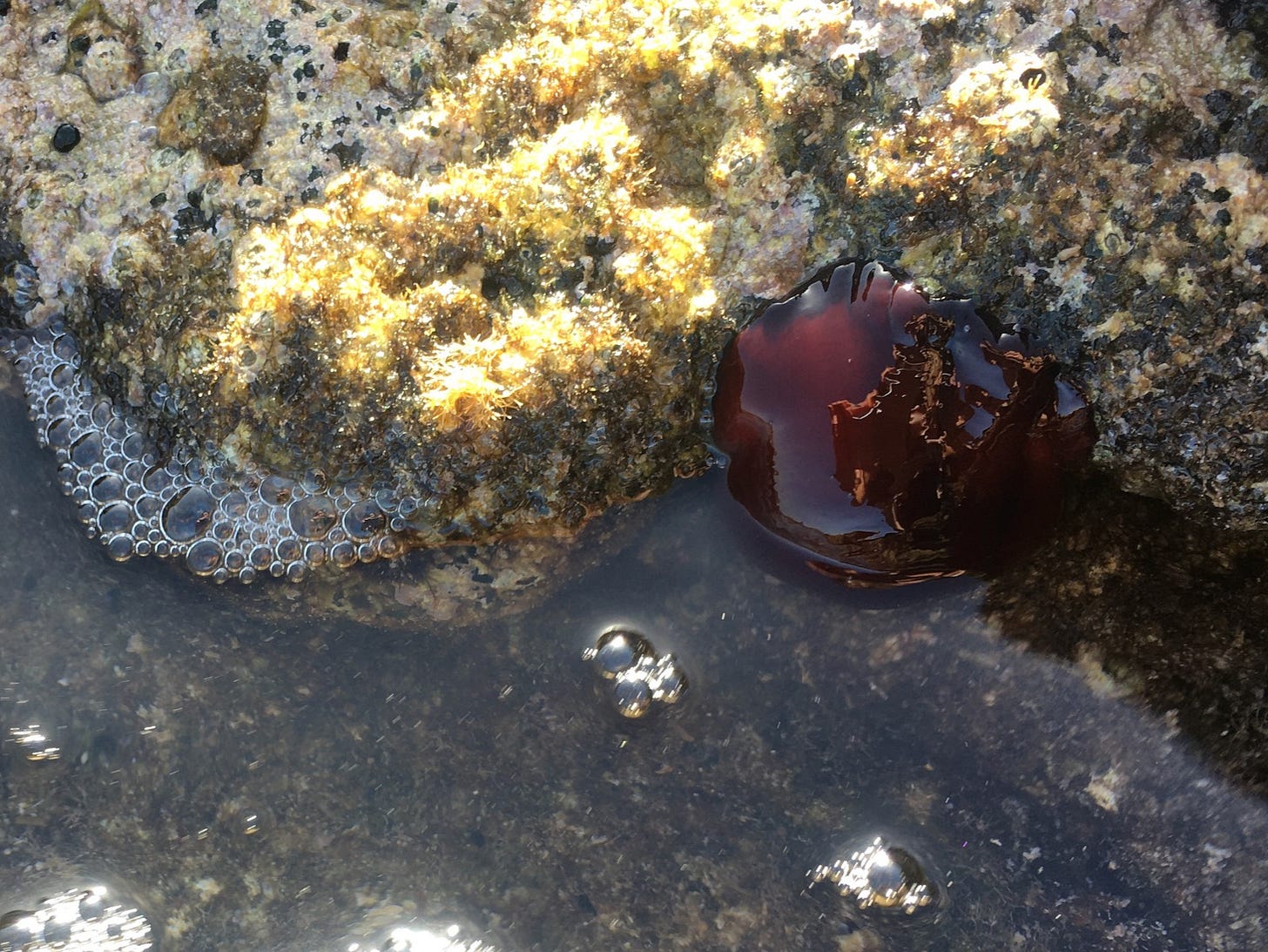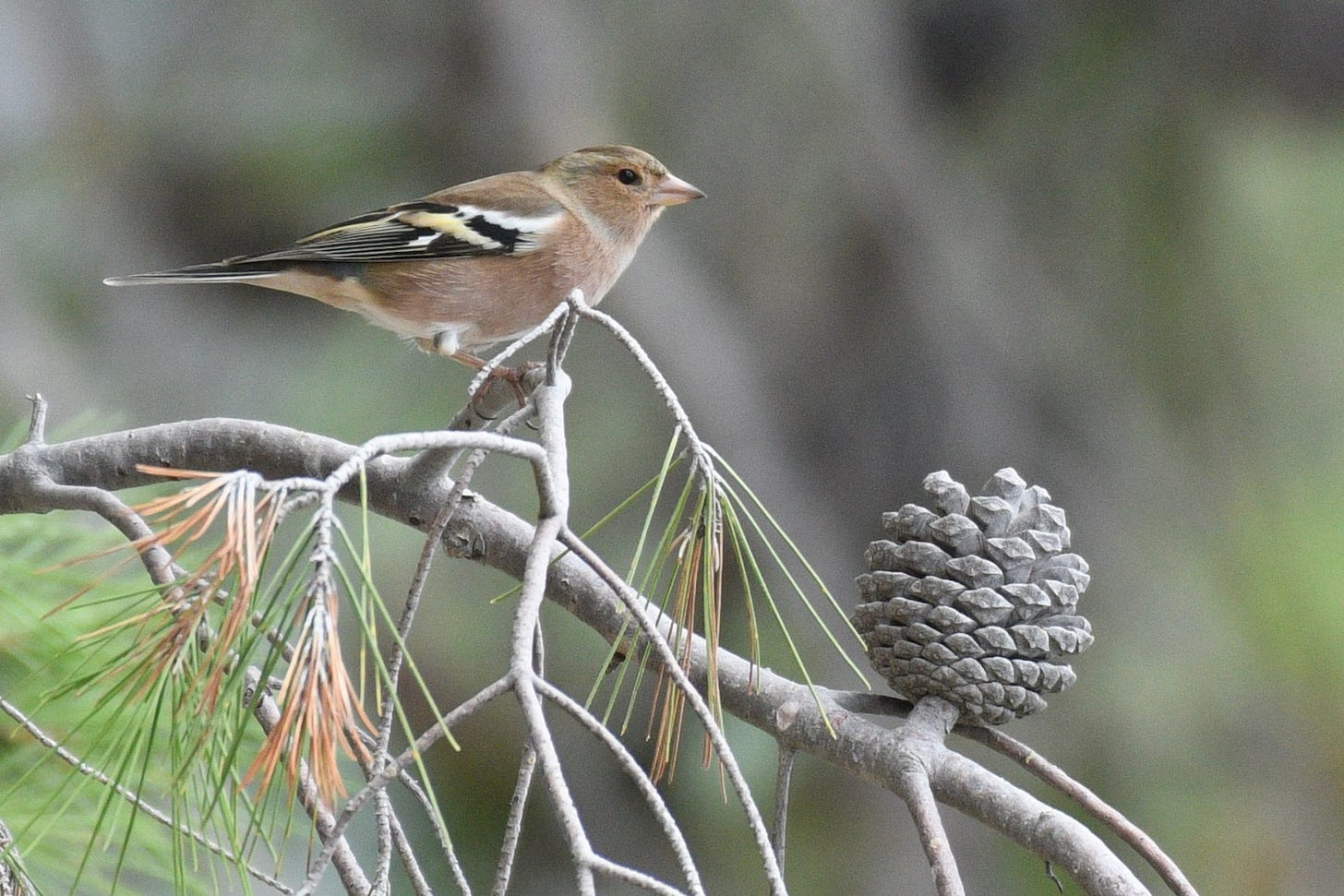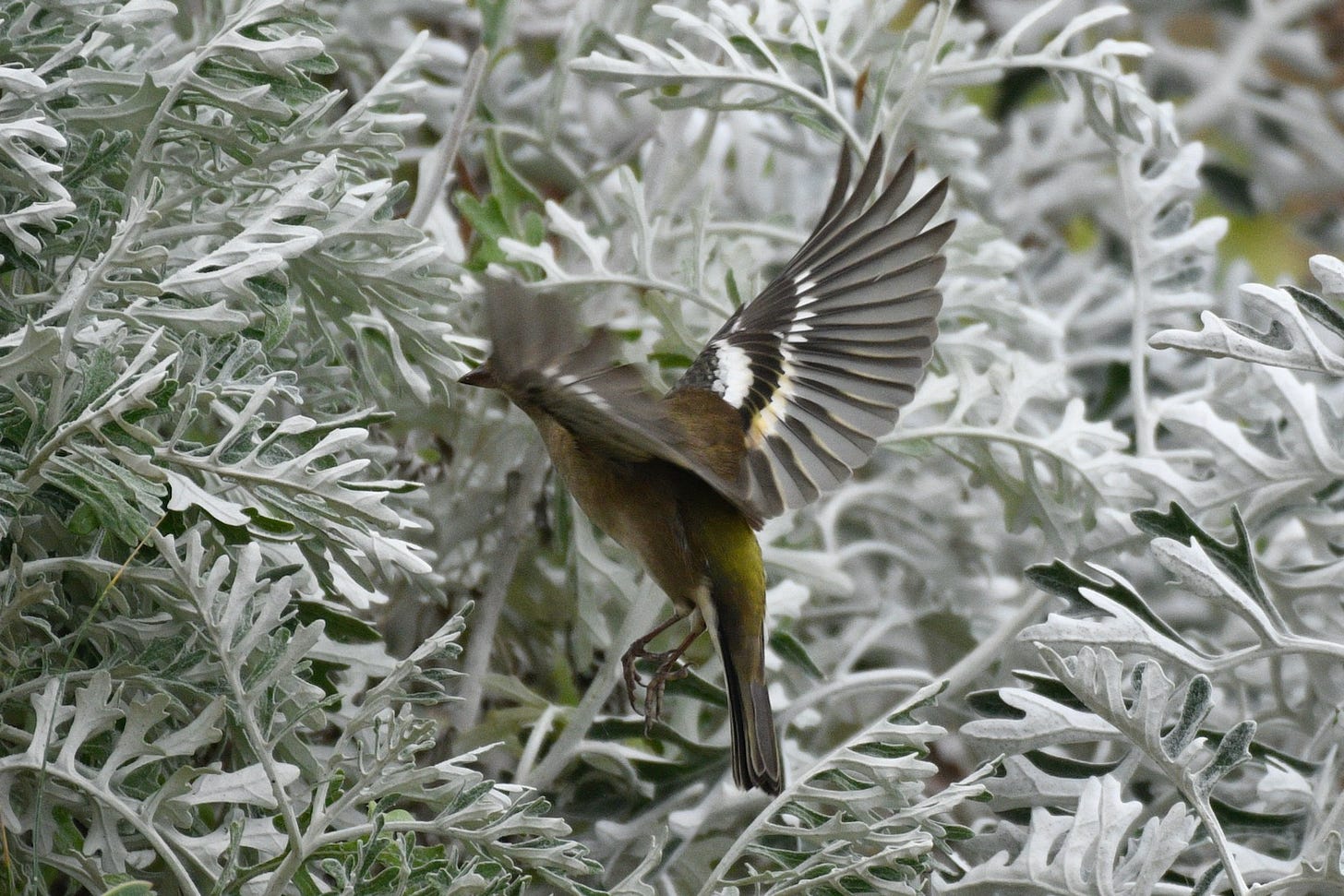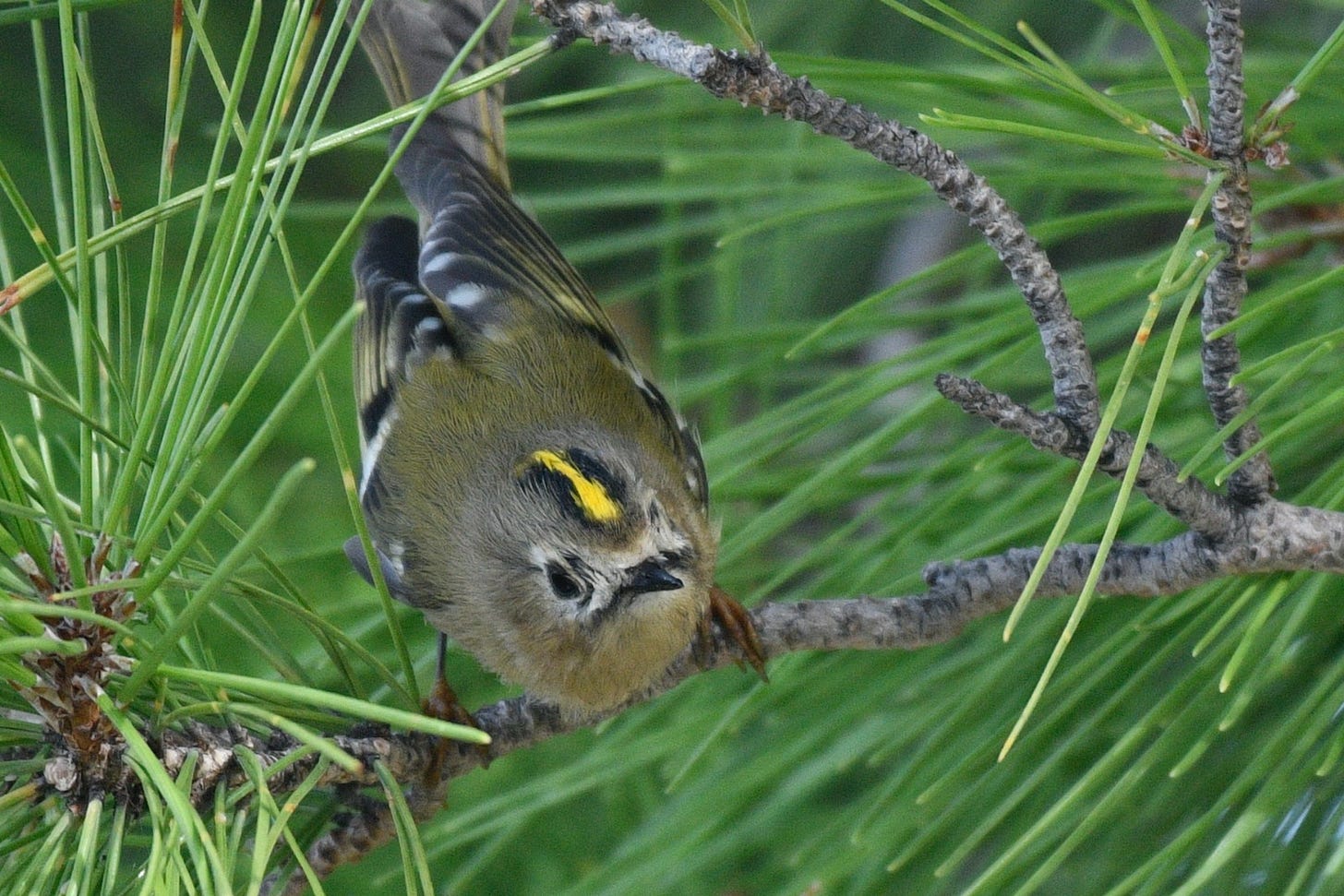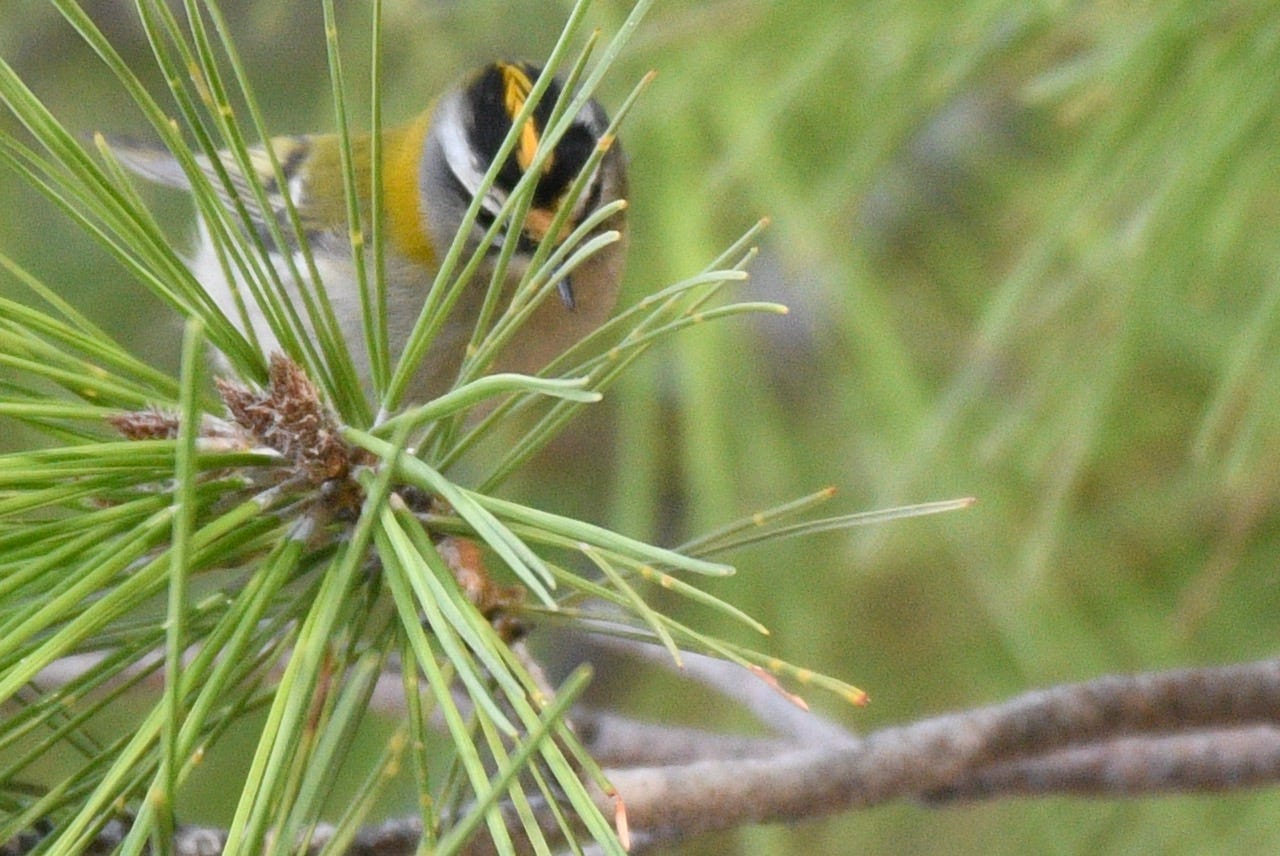The Great Croatian Goldcrest Quest: Part 2
Of Certified Dark-Sky Communities and Small Passerines
In the last instalment of Nonmotorized Trails, I wrote about my sojourn in Silba, Croatia, a car-free island with a population of around 300 permanent human residents and an undocumented number of Black Redstarts (then lifers to me) and curiously tame, almost personable Goldcrests. And I had not taken my camera. Damn.
Silba had offered not only the joy of small birds but also sublime night walks, blissful twilight swims, the clearest waters I’d ever seen, and a much-needed reminder of the calmness and quietness of small and insular car-free communities. A year later, however, I was in Europe with a real camera, and the biggest thing on my mind was the continent’s smallest bird. That’s how I got the idea to return to Croatia when I had a few weeks’ gap to fill before returning to the US for an event at the end of October (or was it just to vote to make abortion a constitutional right in my home state?).
I thought about going back to Silba, but I couldn’t be sure that the previous year’s goldcrest influx wasn’t a fluke, and even if it wasn’t, I might be headed there too soon to see their glorious return. I looked at the country’s other car-free islands, but anything else felt like even a greater gamble goldcrest-wise. Immediately after leaving Silba in November 2022, I sailed to neighbouring Olib, where I stayed for two weeks. Oddly enough, I saw no goldcrests in Olib, nor did I meet up with any of the small birds further south in Zlarin, where I stayed for much of December. I’d had to choose based on other criteria. It was due to practical considerations (e.g. flight logistics and housing options) and name recognition that I eventually decided on the town of Jelsa.
Dark Skies De Jure
Does the name of Jelsa not ring a bell to you? Well, it might not if you’re not an avid follower of DarkSky International, and even if you are, it can be easy to overlook the news from Europe amidst the uncountable announcements of new Dark Sky Places in Utah. In 2022, the Municipality of Jelsa was awarded its status as an International Dark Sky Community (IDSC), making it the first IDSC in Southern Europe.
In my last post, I described Silba as having dark skies de facto but not de jure. The night skies are dark and starry, with some of the most magnificent views of the Milky Way I have seen. However, to my awareness, Silba has no codes or legislation to limit light pollution and protect its exquisite views into our galaxy; it just happens to be well isolated. Jelsa, on the other hand, replaced its unshielded public streetlights with shielded lights no hotter than 3000K, in compliance with the requirements of DarkSky International. The municipality also installed telescopes and initiated educational programs to teach children about the importance of protecting the night sky.
I was once asked about the difference in the quality of the night sky between an official Dark Sky Place and any old place that we’d think of as having dark skies (like, say, your run-of-the-mill remote rural area or isolated island); I replied that an official Dark Sky Place has dark skies AND paperwork.
Personally, when I decide to stay in an IDSC, the most important reason for my choice is that the IDSC status provides me with a semi-arbitrary decision criterion, as opposed to no decision criterion at all. There are a lot of towns in Croatia alone; I very well might’ve been overwhelmed by choice if I hadn’t’ve been able to say “I’ve heard of Jelsa, so I’ll check out the options there.” The second most important reason is that I like to spend my tourist money to support communities that are invested in preventing light pollution. The third most important reason is that towns that are able to qualify as IDSCs are likely to possess other features that are important to me, such as being fairly small and surrounded by nature (an IDSC might be surrounded by agricultural land, I suppose, but it’s extremely unlikely to be surrounded by development or, say, next to a fracking site). As the above-linked page says of Jelsa, the town “is situated in a bay in the middle of the Hvar’s north coast. There are dense pine woods on the sloping hills of the island’s southern ridge, and the agricultural plain lying to the west of Jelsa is the UNESCO world heritage site Starigrad Plain.”
It’s only when we get into the non-medalling ranks that we get to my night-related reasons: the fourth most important reason is that a holiday letting in an official IDSC is less likely to be plagued by glaring white LED streetlights outside the bedroom window, and the fifth is that sometimes the skies are indeed dark and starry.
Nights in Jelsa were indeed dark and starry. I must confess, though, that I had better night walks in isolated and car-free Silba than in Jelsa (although the path east away from the Jelsa harbour was not bad at all for this purpose). In fact, I’d had better night-sky viewing from my terrace in Vlieland, the Dutch island whence I’d come, than my balcony in Jelsa; the latter’s stunningly expansive views were its drawback at night, since it meant I had to see overbearing car park lights from supermarkets on the edge of town. But, then, the night skies were not what brought me back to the Adriatic…
Feather Friendly
…so let’s turn then to the birds — beginning with a PSA on behalf of our feathered friends. Now, despite the ample opportunities for puns, I will include only one Split image in this post. After all, I was there only for a Split second before I was going to Split to Jesla. I can’t resist mentioning, however, that the Saint Jerome Airport has Feather Friendly Dots (or their Croatian equivalent) on their windows.
These dots are a fairly unobtrusive solution to prevent bird collisions. I’d like to say that they were also an auspicious omen at the beginning of the Goldcrest Quest. Unfortunately, as I was packing to leave my hotel in Split, I heard a dreaded thud at the window. With a sinking feeling, I looked out to see a great tit (Croatian: velika sjenica) lying dead on the concrete roof of building below. Immensely saddened, I wrote, “This was the first bird other than pigeons that I’ve even seen in the city. There are no trees or scrub in this area — what was a great tit doing there? It’s almost as if the bird had to come to bid me adieu, only to meet its untimely and tragic death.” Well, that was a bit of melodramatic anthropomorphism, but nonetheless the incident was a stark reminder of the importance of bird-friendly window treatments.
Not a Car-Free Island
Hvar is a much larger island than Silba, much more populous, and definitely not car-free. In fact, many readers are probably already familiar with Hvar for its party culture on the west side. I avoided all of that. However, the boundaries of my activity were circumscribed by busy cross-island roads that seemed unsafe for pedestrians, such as the D116. When you’re a pedestrian rather than a motorist, a major thru-road doesn’t provide access to new places; it precludes it. Barriers like the D116 meant that I couldn’t explore as far afield as I might have otherwise. As it was, I could never venture very far from development. If there are any hiking trails around on Hvar, they were not within reach on foot from Jelsa. Fortunately, it was easier than feared to find spots out of earshot distance from the noise pollution of motorbikes, and I had several go-to walks from my front door that provided more than enough to keep me engaged and enchanted. Birds aside, it’s difficult to tire of the clear blue waters of the Adriatic, even when you “have to” resort to one of couple seaside saunters day after day.
I turn now to my four favorite routes, and the birds they brought…
Walk 1: Park Perivoj
Hardly a walk, the public park Perivoj was just down the stairs from my apartment, on the way to the harbour and old town. This was my daily go-to location for bird-noticing. Granted, most of the birds I noticed were relatively familiar ones, like house sparrows and blackbirds, which I would not have needed to fly to Croatia to see.
The excitement mounted when I noticed several blackcaps (crnokapa grmuša) – an uncommon sight at most of my European destinations – and it mounted still more when I glimpsed cute little pale yellow birds flitting about the trees. Could they be…?
…nope, the cute little yellow-ish birds were not goldcrests, but they were also flighty and adorable. I never did meet a goldcrest in Perivoj, but my frequent visits gave me a newfound appreciation for leaf warblers. As I remarked of one at the time, “it was a challenging little bird to photograph and fun to watch — unpredictably flying out from the branches and fluttering around while choosing a new place to land.” I assume that the birds I saw were common chiffchaffs (Croatian: zviždak), but I am confessedly poor at ID-ing Phylloscopids, and it’s possible that some were wood warblers (Croatian: šumski zviždak), which also appear on bird lists for Hvar. I guess that either species must answer to “Zviždak,” so we’ll go with that for the captions.
Walk 2: The Town
The core town of Jelsa is pedestrian-friendly, with much of its attractive centre being car-free – which is not to say pedestrianised, however, since plenty of motorbikers feel free (and perhaps are free) to drive their noisy, stinkin’ vehicles right through the centre. Fortunately, though, there was never enough traffic to feel unsafe in the town.
It was the central residential area that brought me the first of the two birds for whom I’d been hoping: black redstarts! It seems, however, that I should have been more specific in my wishes. I had hoped for a good shot of one of these handsome birds in a tree or garden, but I was not granted this by the young bird whom I saw most often; s/he preferred to stand in the street or, at best, play in the gutter.
For the exercise and views, I often enjoyed walking up and up until I reached the church at the top of the hill, Crkva Gospa od Zdravlja. Sometimes I’d stop at the altar behind the church — neither to pray nor to sacrifice a goat, but merely to peer into the prairie-like field and contemplate 3 billion years of evolution by natural selection.
Crkva Gospa od Zdravlja was the farthest I would reached to the south on Hvar; to attempt to venture further led only to the D116. But no matter. It was while returning back down to the town that I met some of the most photogenic fliers of the trip: serins!
Walk 3: Sandy Beach
The coastal walk from Jelsa to Vrboska seems fairly well-known. One AllTrails user wrote of the route, “Used to be a very good macadam road, but is now probably paved.” He predicted correctly. Most of the route is now a paved road that is shared with motorcars, and it traverses a very built-up area, the entire route lined by holiday homes and apartments. Luckily, I didn’t encounter too much motor traffic during my walks on this route, although it seemed popular with cyclists — especially, oddly enough, cyclists who spoke English with American accents. (What on Earth were other Americans doing in the kind of place that I choose to visit? I suppose I could’ve asked, but I would always just say “Dobar dan” and continue on my way.)
When I walked with my heavy DSLR and telephoto lens, I never bothered to go all the way to Vrboska. But then I didn’t need to: I found what I sought near a spot that Google Maps calls Sandy Beach. On 15 October, I reported the following, “I followed a gravel road to the northwest and wound up converging on the road to Vbroska at Sandy Beach. What was most special to me, though, was what I encountered immediately prior to this intersection: another strawberry tree ... and ... flitting about it ... two goldcrests!” My first goldcrest sighting of the trip. In my notes I added, “Of course what was special about Silba last year wasn’t merely that there were goldcrests, but that they were abundant, tame, and conspicuous, i.e. ideal photo subjects. But then when I arrived in Silba on this day a year ago, there were no goldcrests at all, so perhaps the two I saw today are only a harbinger of an influx to come.”
Sandy Beach became one of my go-to destinations, not only because of the goldcrest sighting, but also because there were two pleasant routes there (I often made it into a circular walk). There was the coastal road, of course, but there were also seldom used dirt roads that ran through the adjacent Mediterranean pine forest. The woodland was quite lovely too, and it was usually quieter and always less peopley than the coast.
Alas, I never managed to photograph a single goldcrest along this route, either in the wood or along the coast, although I had more glimpses of both goldcrests and firecrests (in addition to many robins, blackbirds, blue tits, chaffinches, and more).
In fact, looking through my archives, it seems that I never managed to take any good bird photos on this route. As it happened, though, one of my favourite wildlife sightings of the trip happened along one of the nondescript dirt roads – not a hummingbird, not a hawk, not a moth, but a hummingbird hawkmoth (a lifer). Along the rocky coastal route, I also had some pleasant encounters with the local lizards.
Walk 4: Harbour to Bay Mina
I have mentioned in passing that my favourite night walk – and twilight walk – was a footpath on the east side of the Jelsa harbour. It was also fabulous for day walks, when I usually carried on to Bay Mina. Occasionally, I ventured as far as Camp Holiday, but that was the easternmost point I reached during my saunters on Hvar; going further would have required negotiating what seemed to be another high-traffic motorway.
That limitation was no major impediment for my purposes, however, since it was during the first part of this saunter — just east of the Jelsa harbour — that the Great Croatian Goldcrest Quest finally ended. On 18 October, immediately after meeting the serins on the way down from the church, “I had an intuition that I should check out the tree-lined path to east of the harbour before heading back to the apartment, and it turned out to be birdier than I have even seen it — aflutter with chaffinches, great tits, robins, and ... goldcrests (and at least one firecrest). These goldcrests were also much less shy than the ones I’d encountered in the woods near Sandy Beach, if not as tame and friendly as those on Silba.” I even managed to get a few in the camera frame, although I never got a shot that did justice to this cute and charismatic species.
Oh well. The following are the final results from Part 2 of the Great Croatian Goldcrest Quest, plus other feathered friends and more from these seaside saunters.
Final Reflections
Goldcrests gave me a reason to return to Croatia. The town’s International Dark Sky Community status gave me a reason to choose Jelsa. Both were semi-arbitrary criteria at time when I needed to fill a gap before a transatlantic flight. When you live semi-nomadically, sometimes you have to choose something based on reasonably attractive criteria, and then make the most of it – wherever it is, whatever birds may come.
But of course it’s not all for the birds. On my final evening in Jelsa, I lamented, “I don’t know where my goldcrest friends have gone.” I went on to add, however, “The glow of the sea at dusk is one of my favourite scenes – another something of which I could never tire [in addition to the clear blue waters of the Adriatic]. I experienced it first in Denmark, where the Kattegat would glow immediately after the sun set behind it. Magical. On these Croatian islands, I have observed a similar visual phenomenon resulting from a different optical one: the sea glows when illuminated by the setting sun from the opposite side of the sky.”
New Posting Schedule
Going forward, new installments of Nonmotorized Trails will now be posted monthly, on the first Sunday of the month. Thank you for reading, and see you in August!




